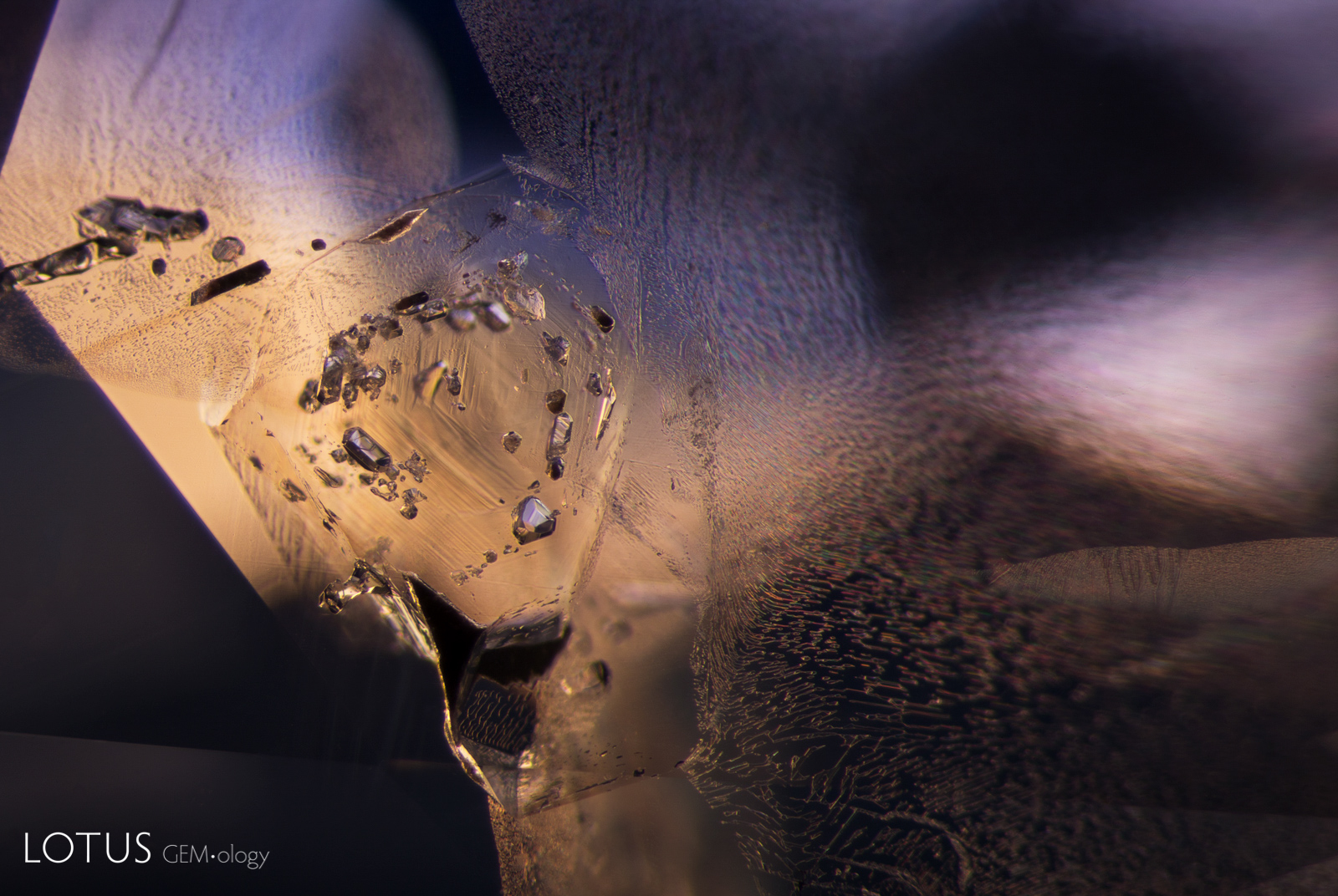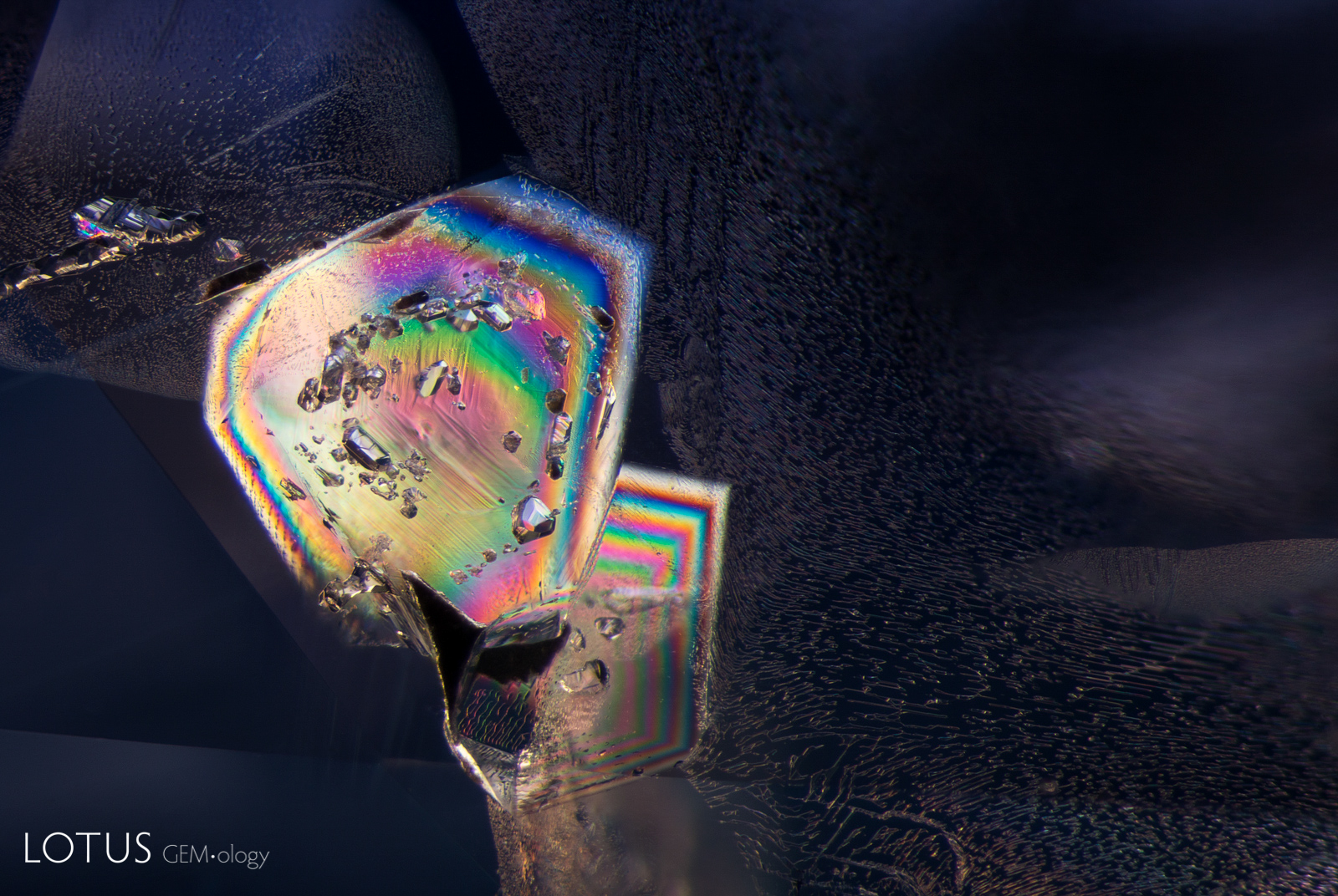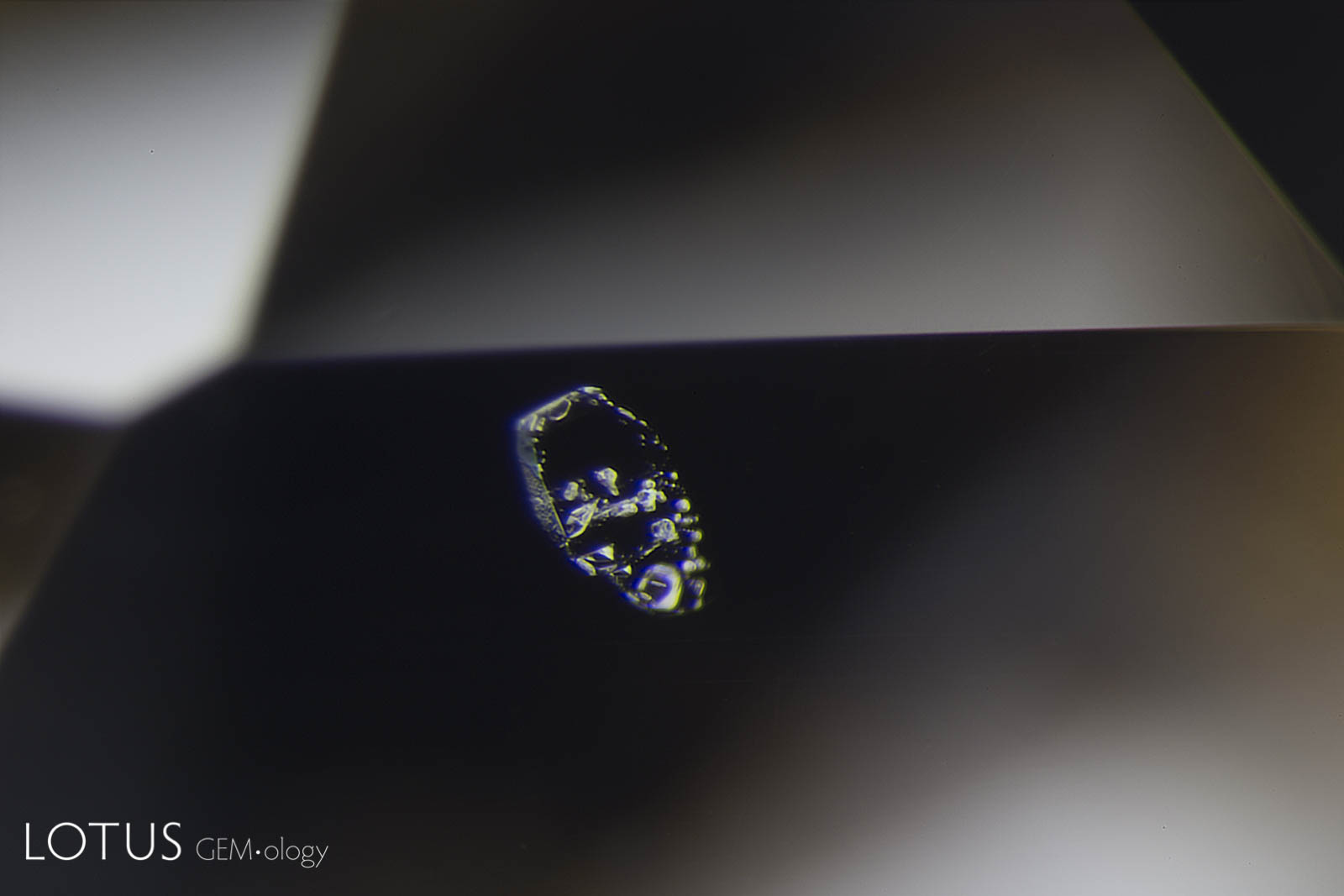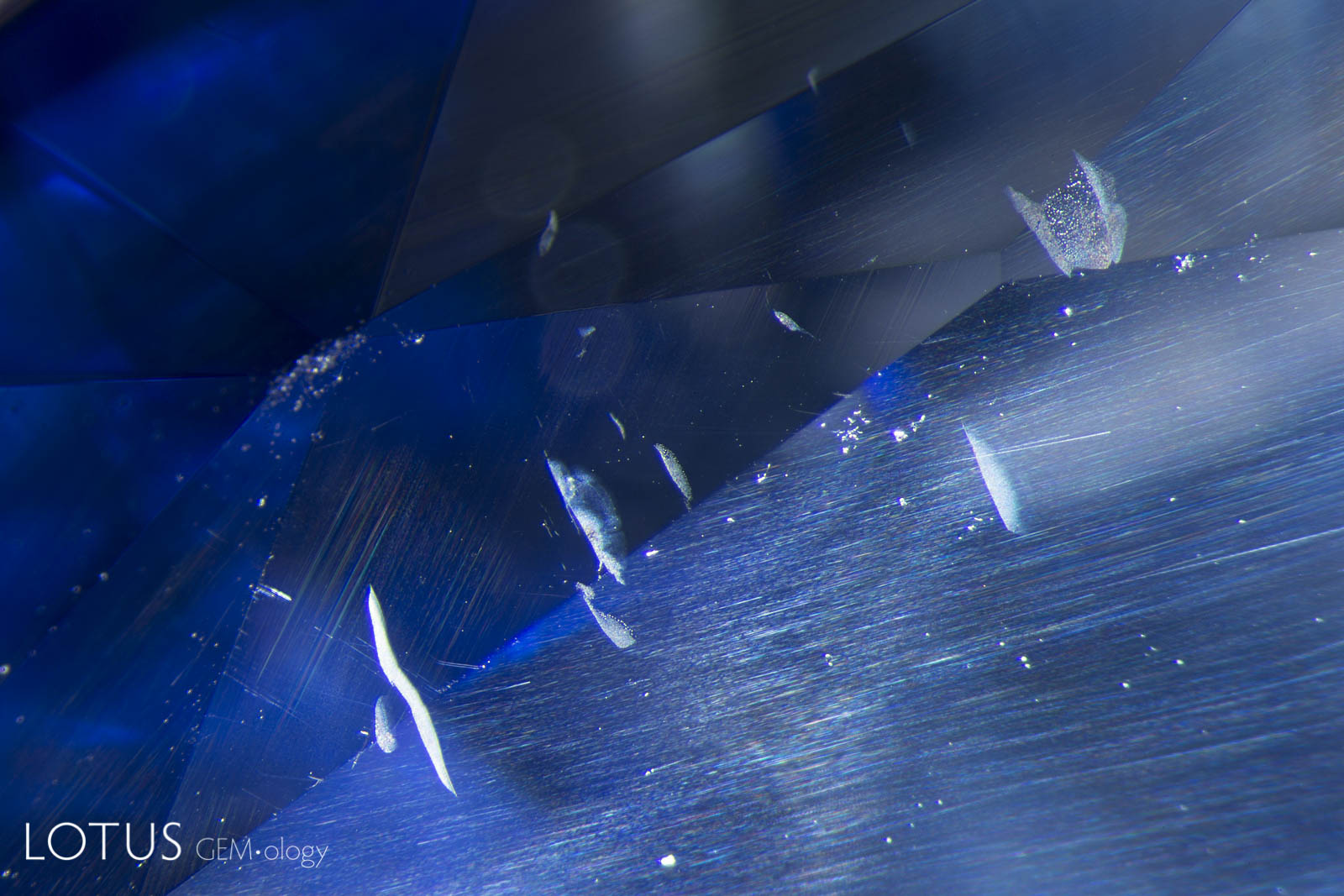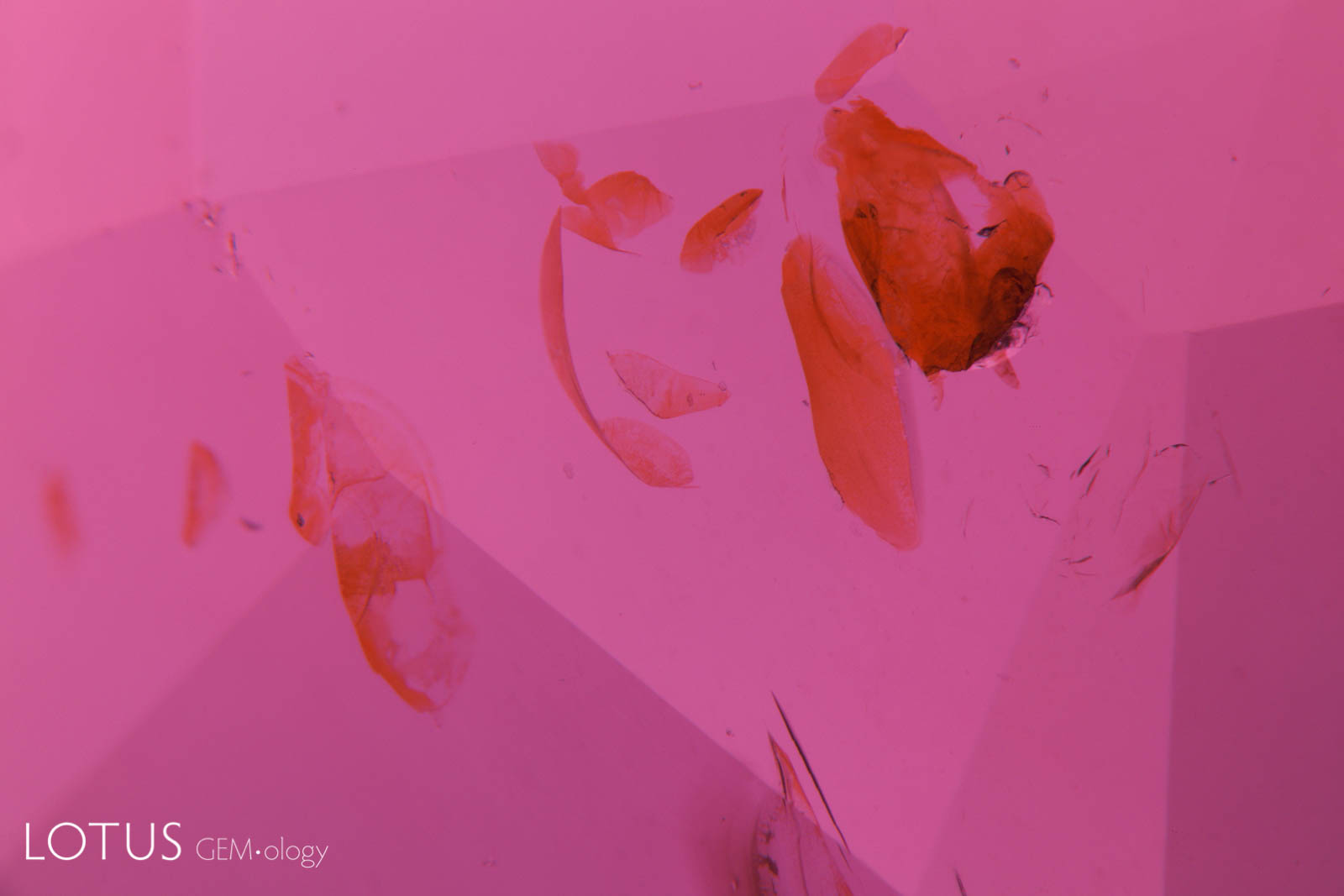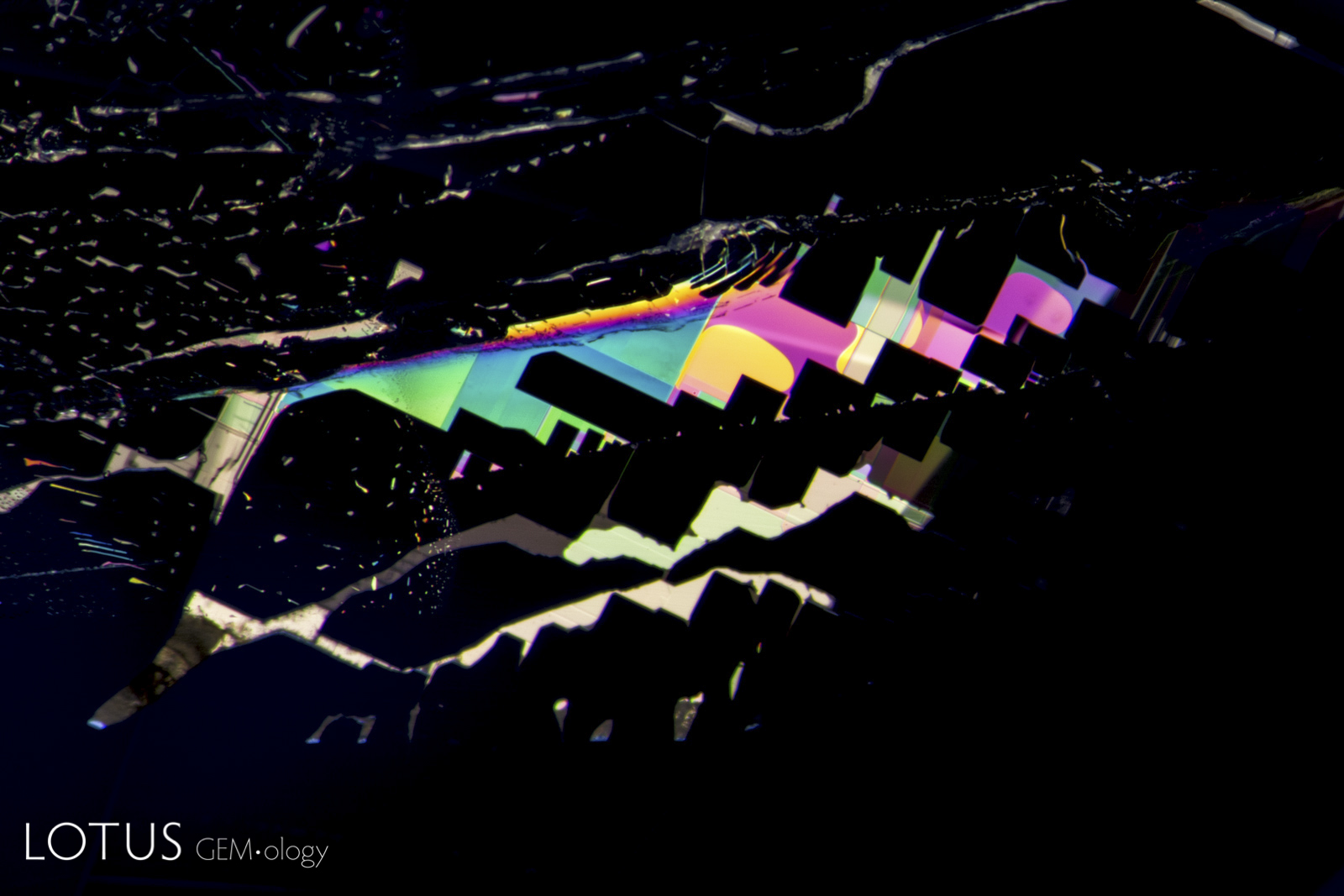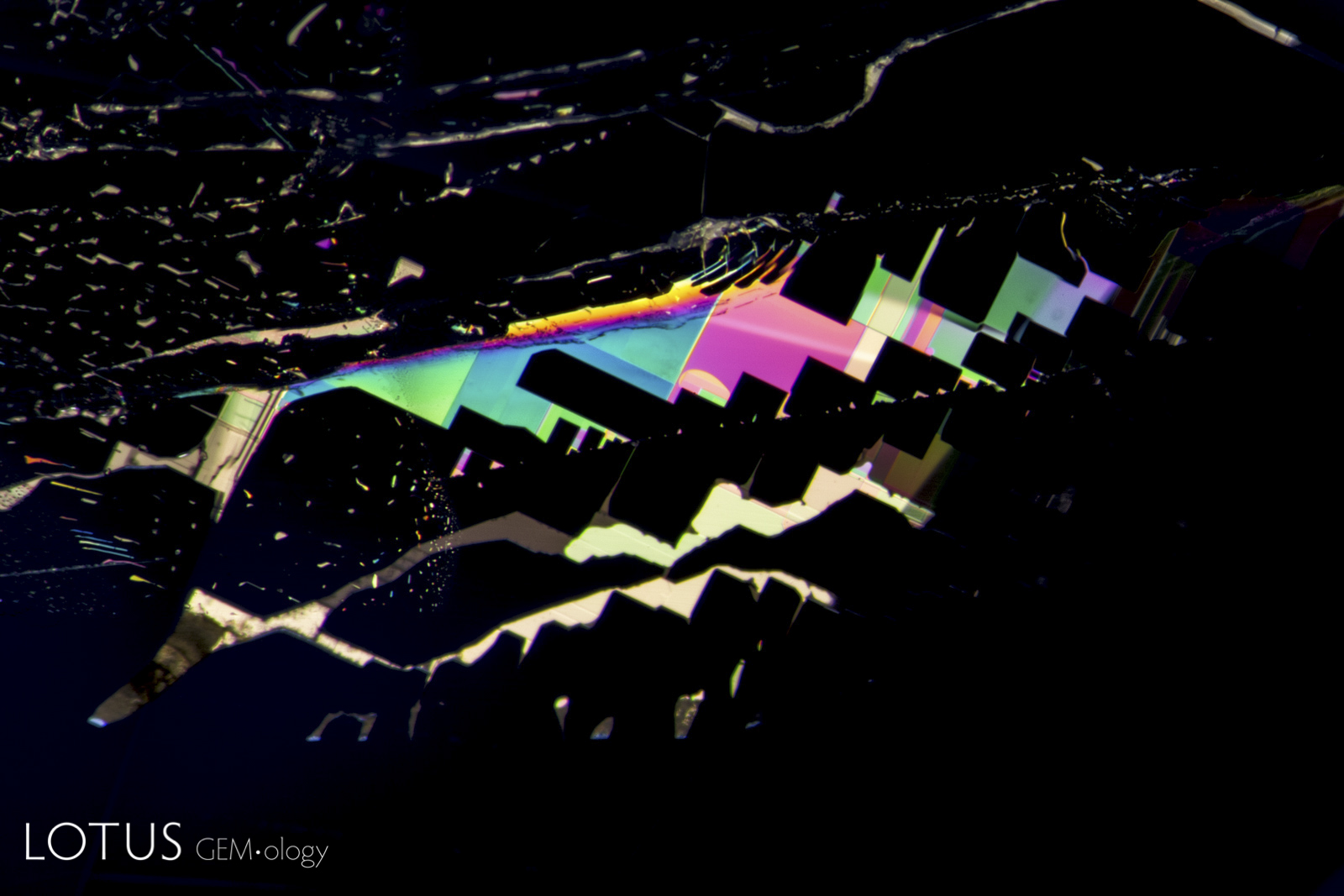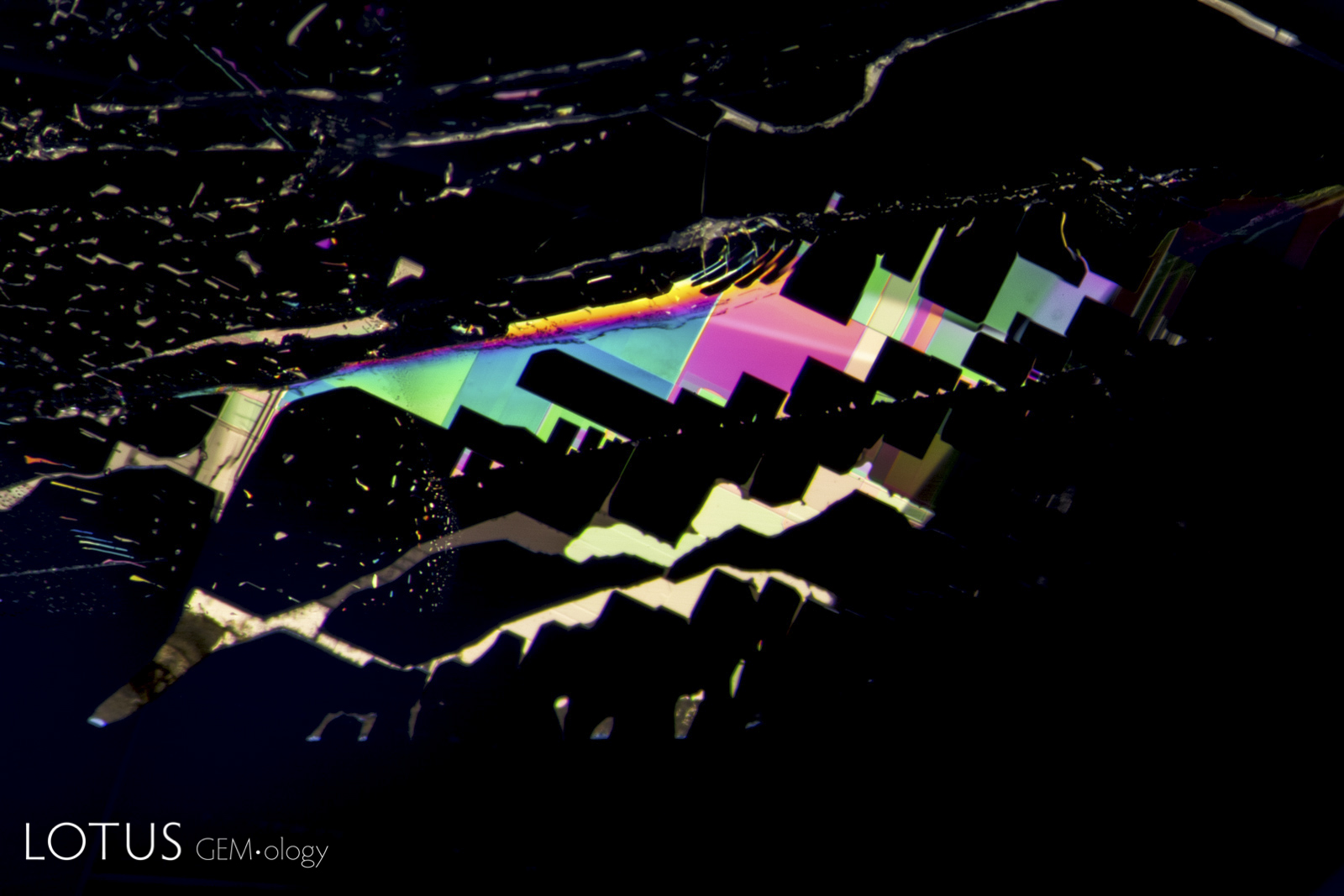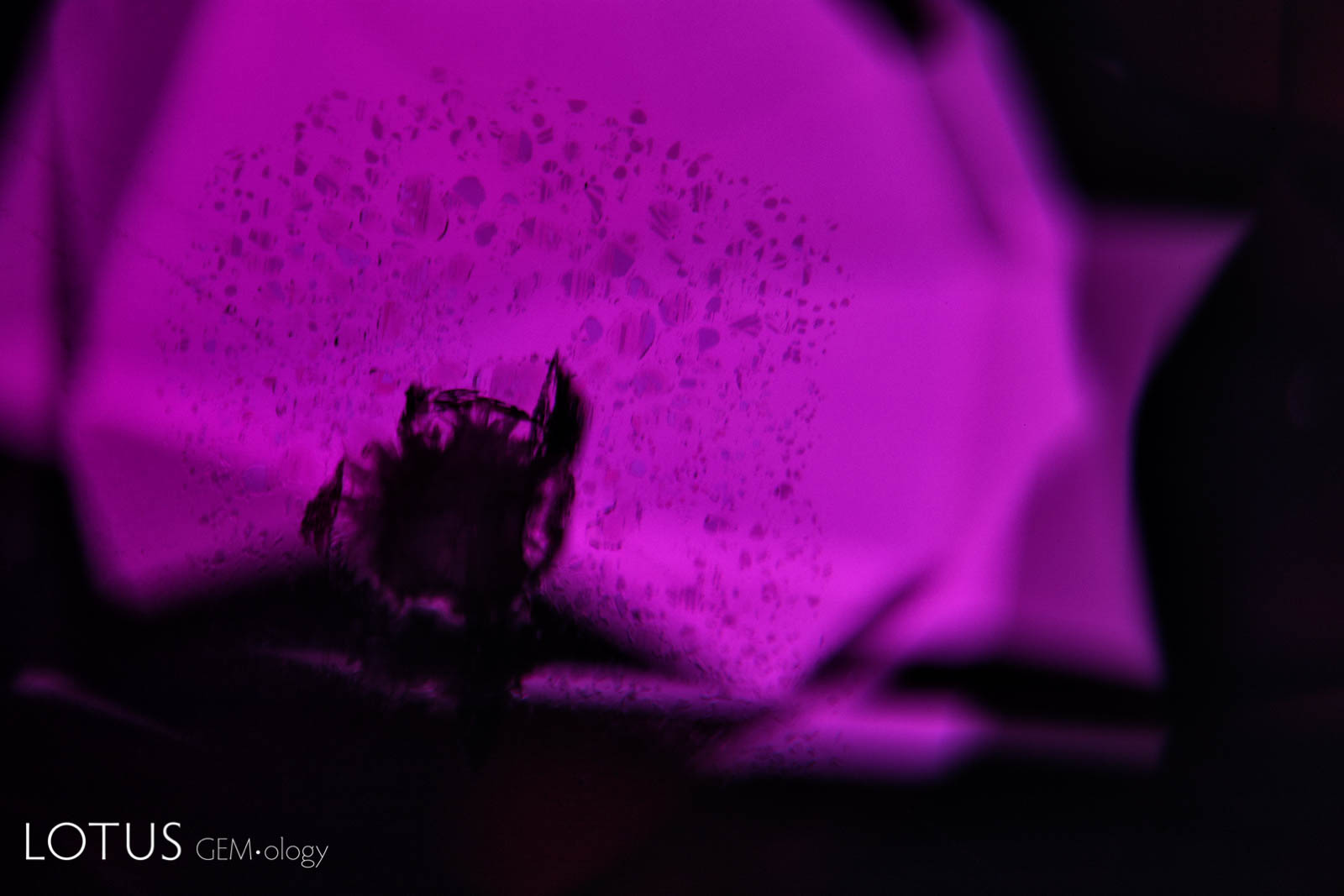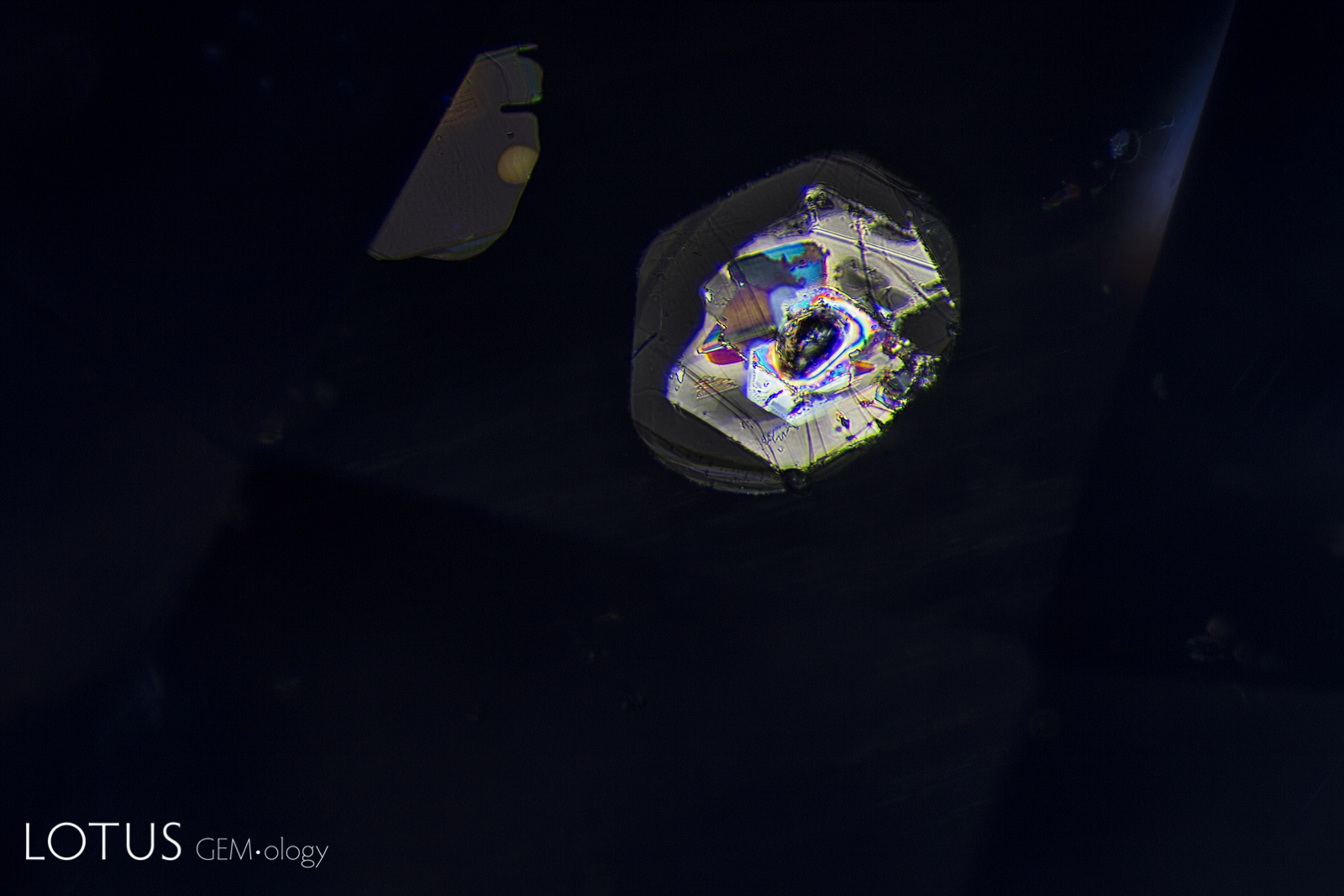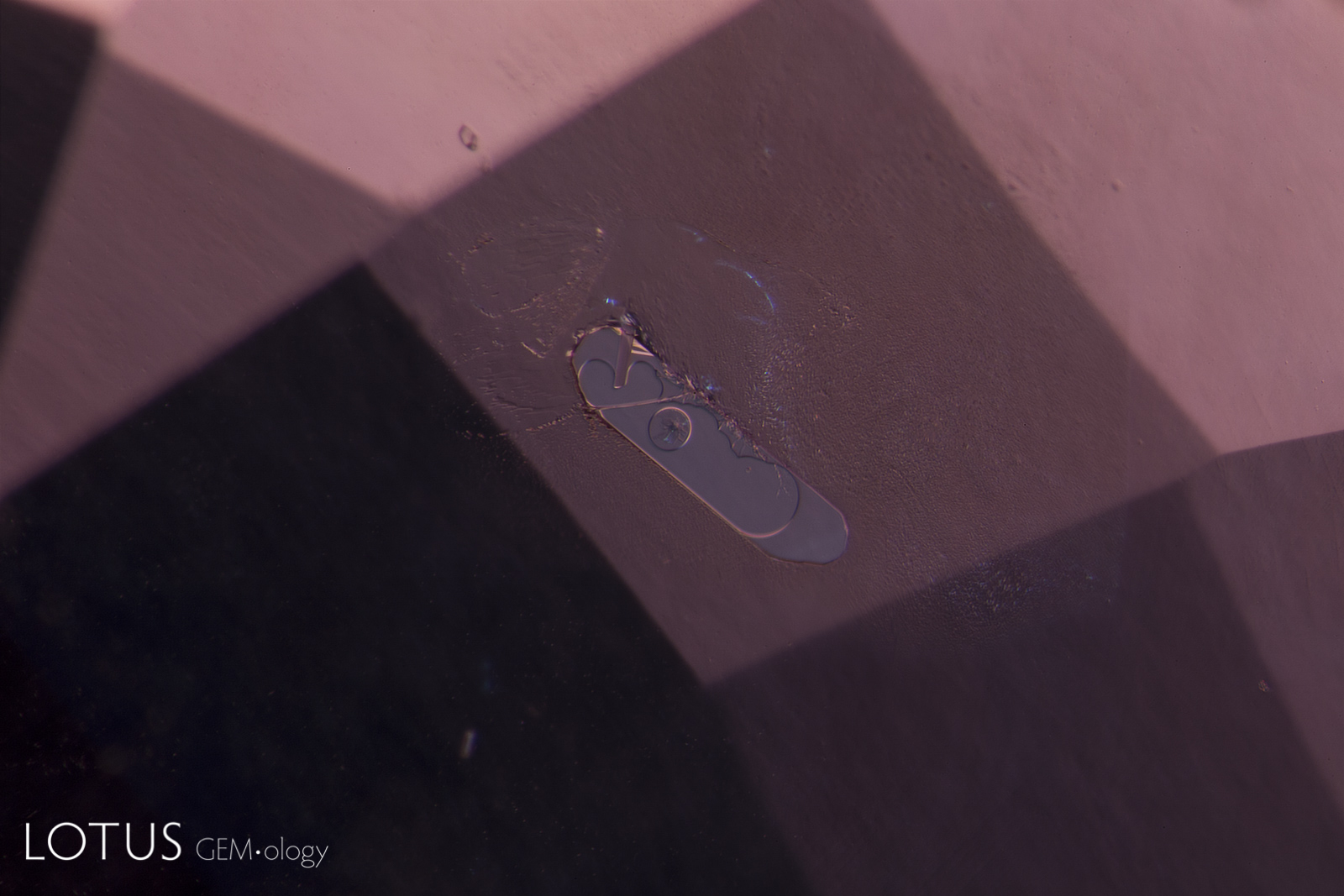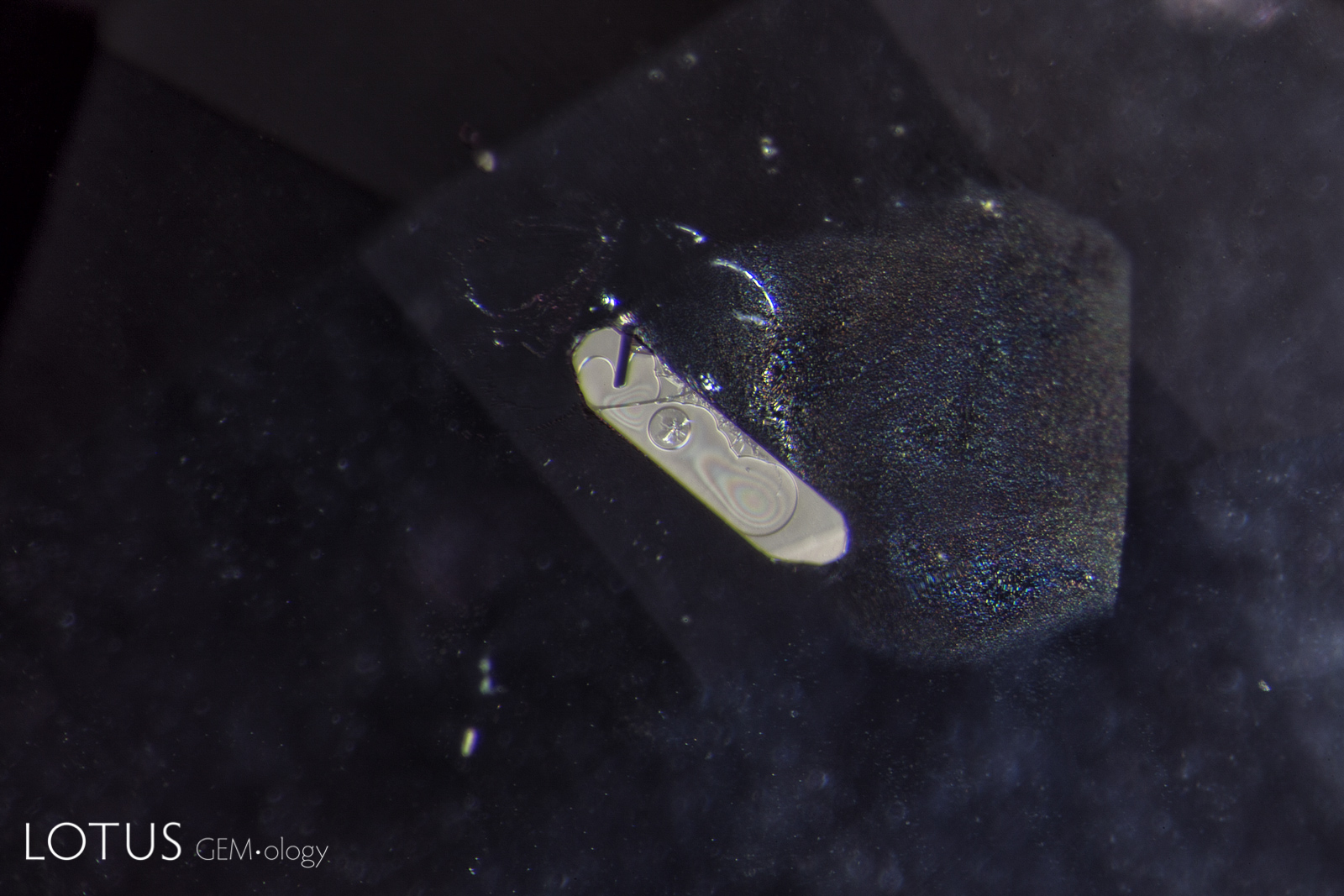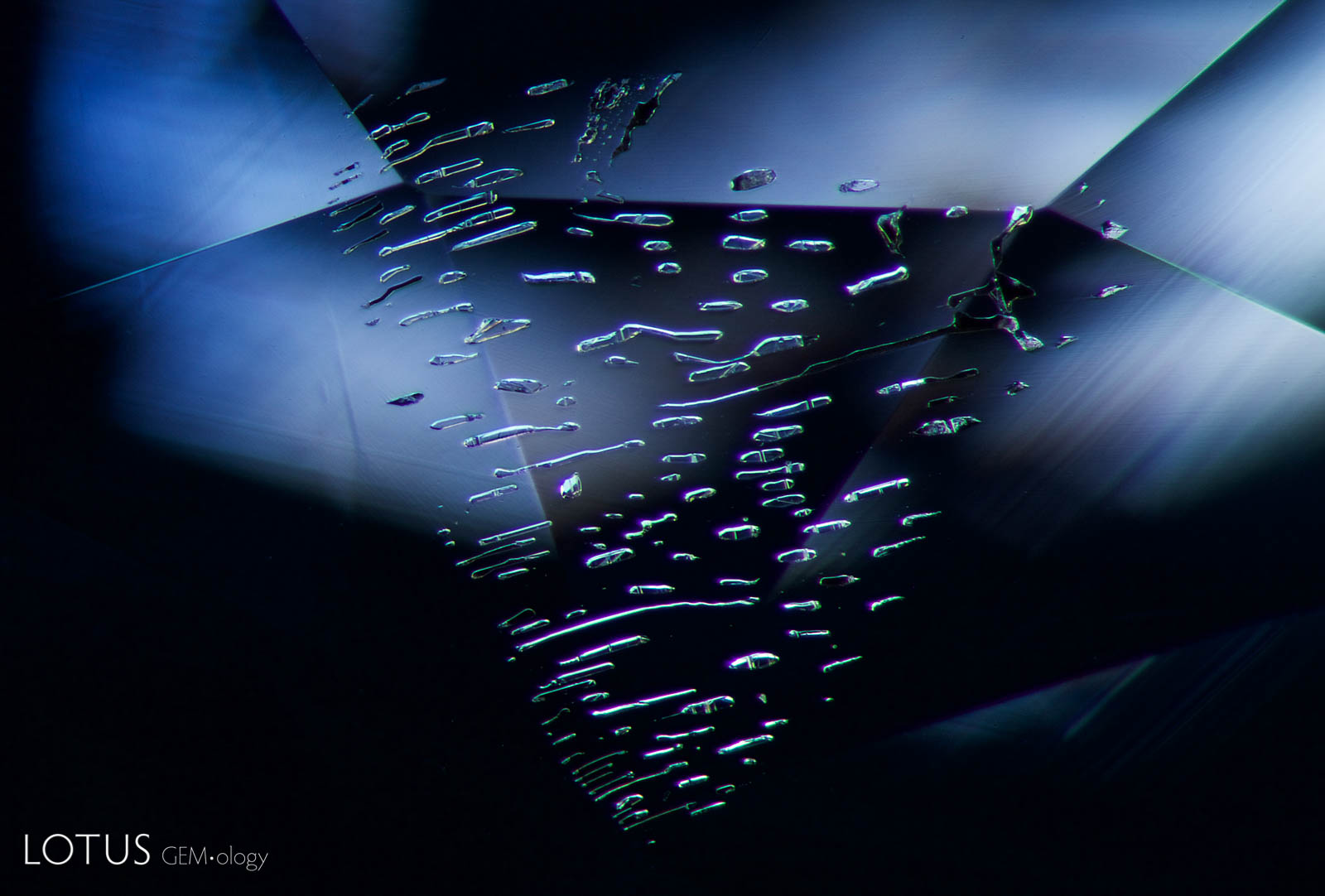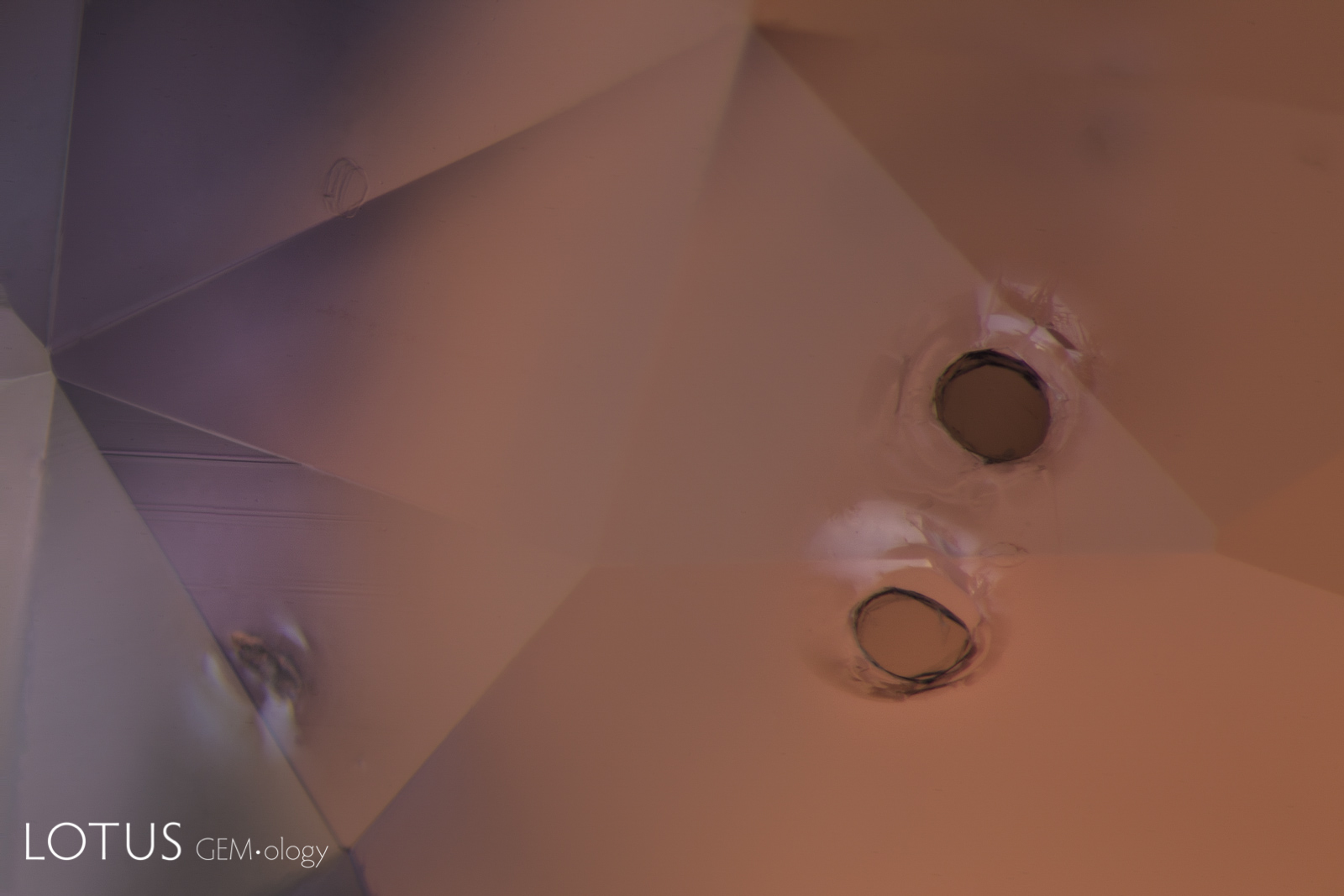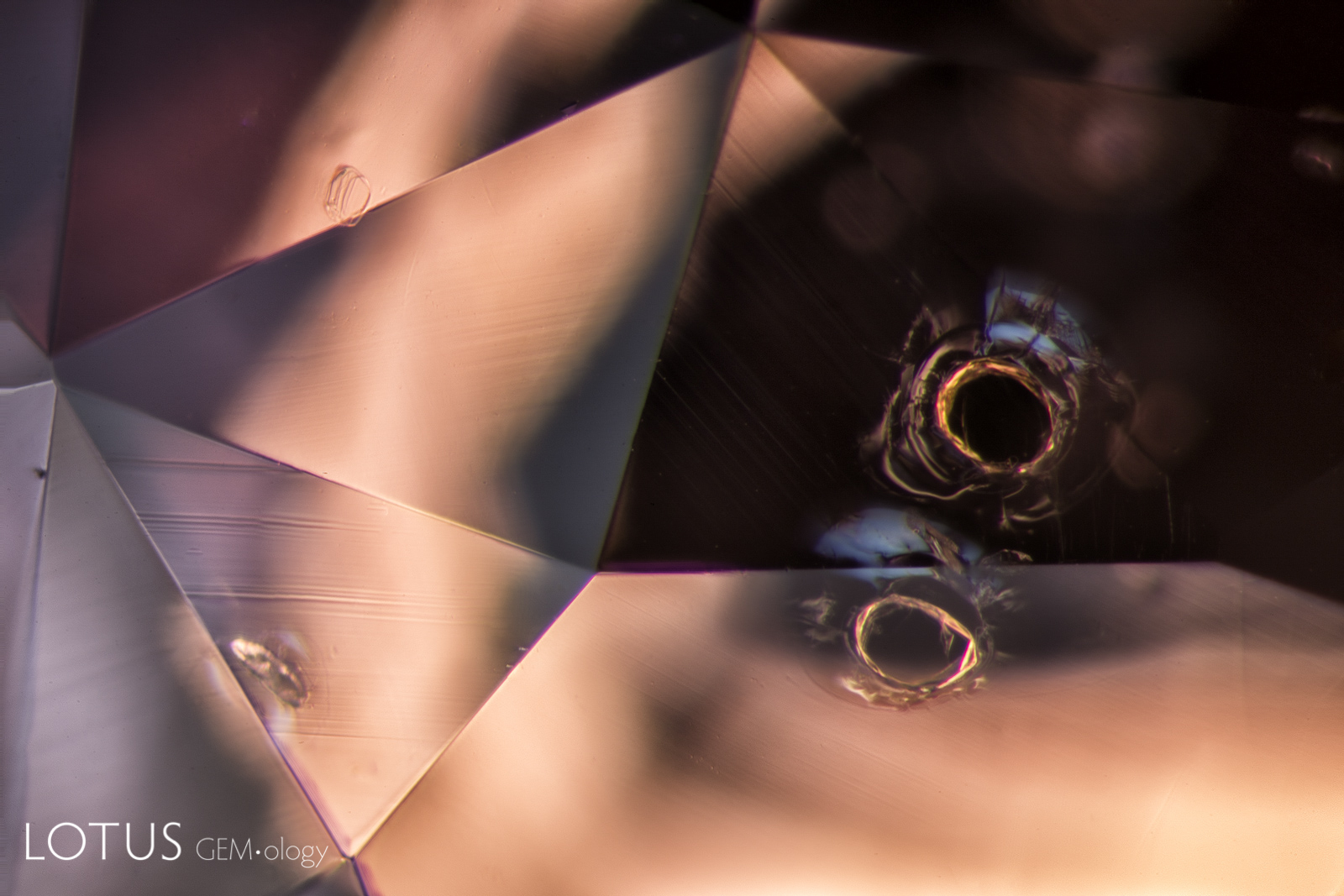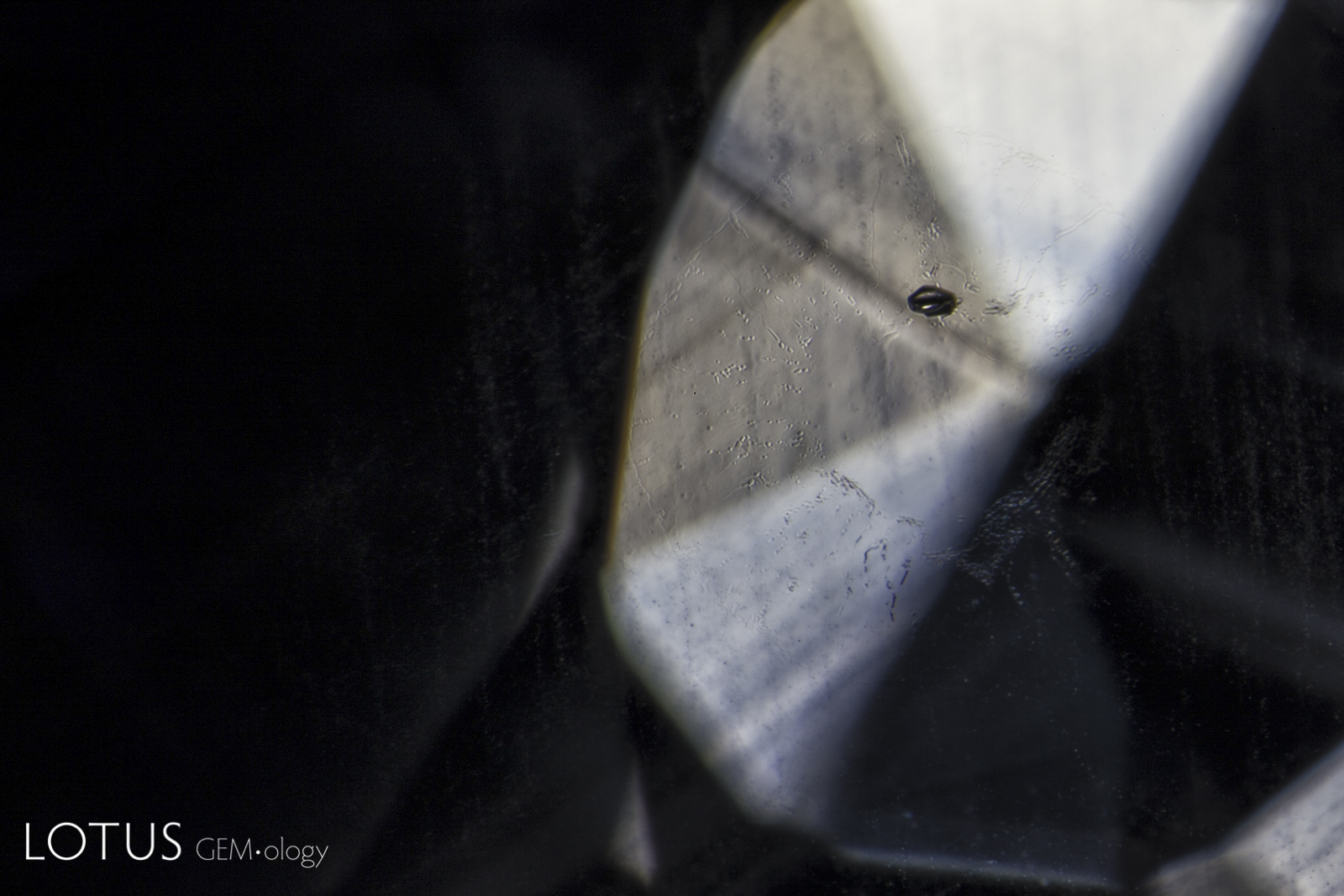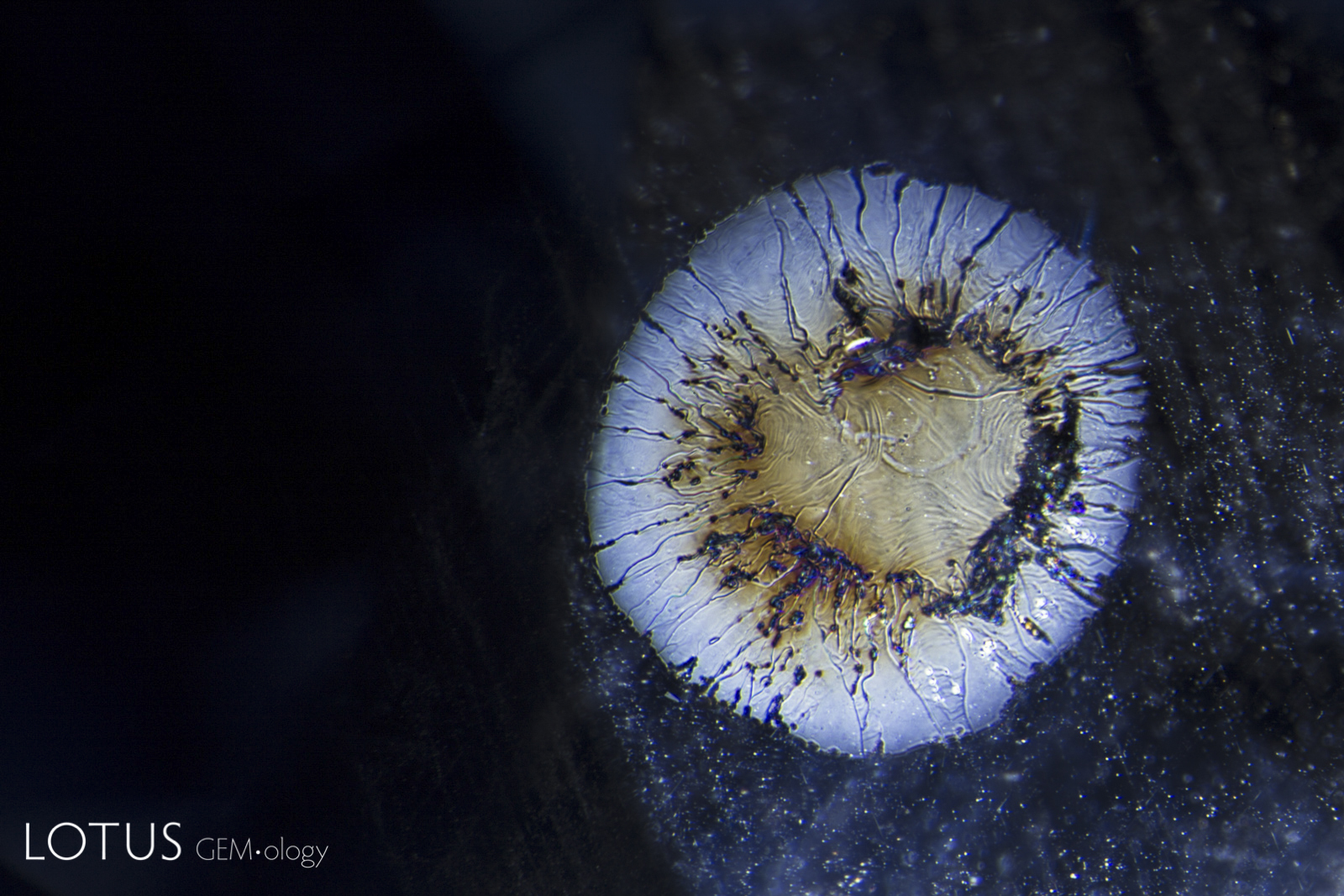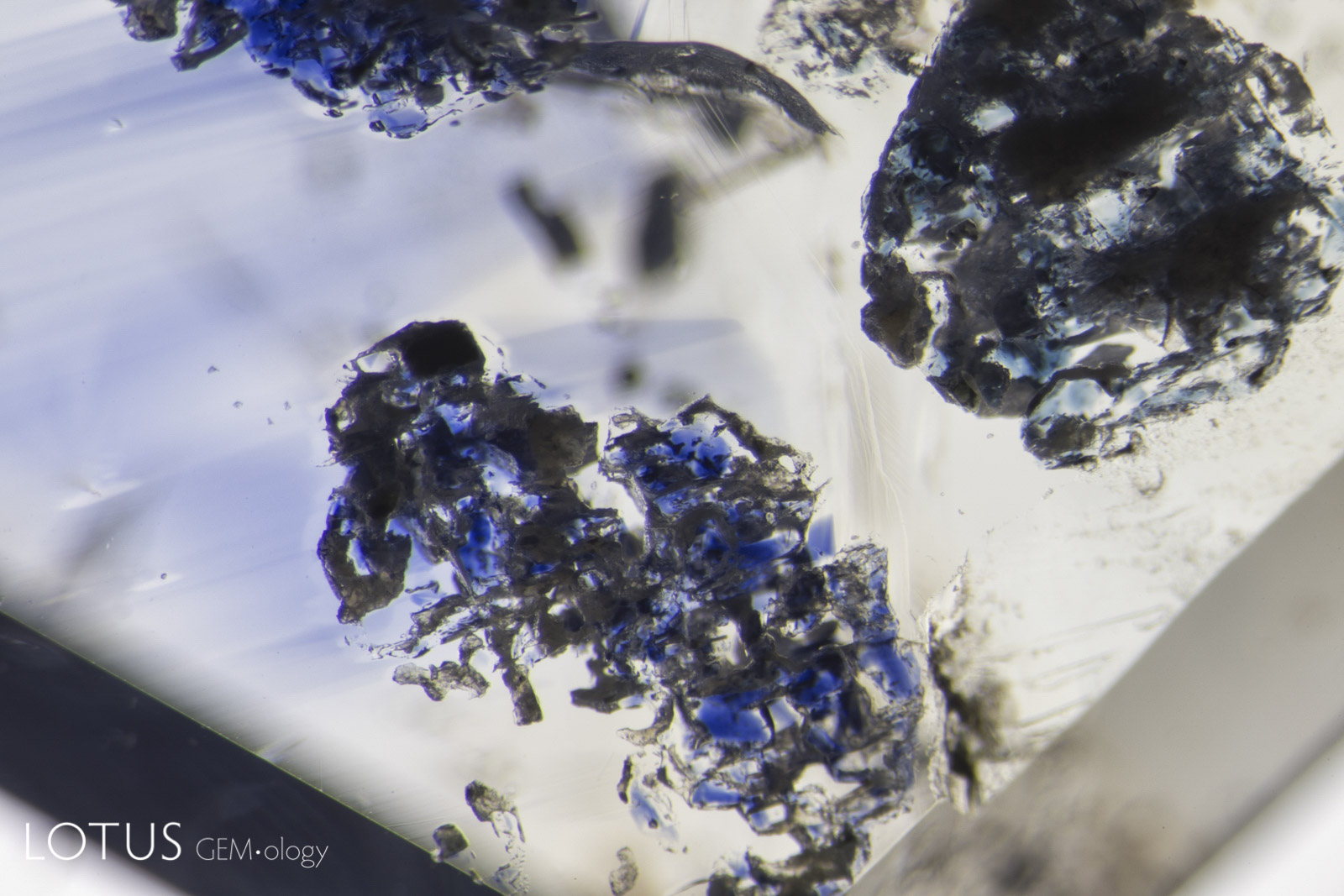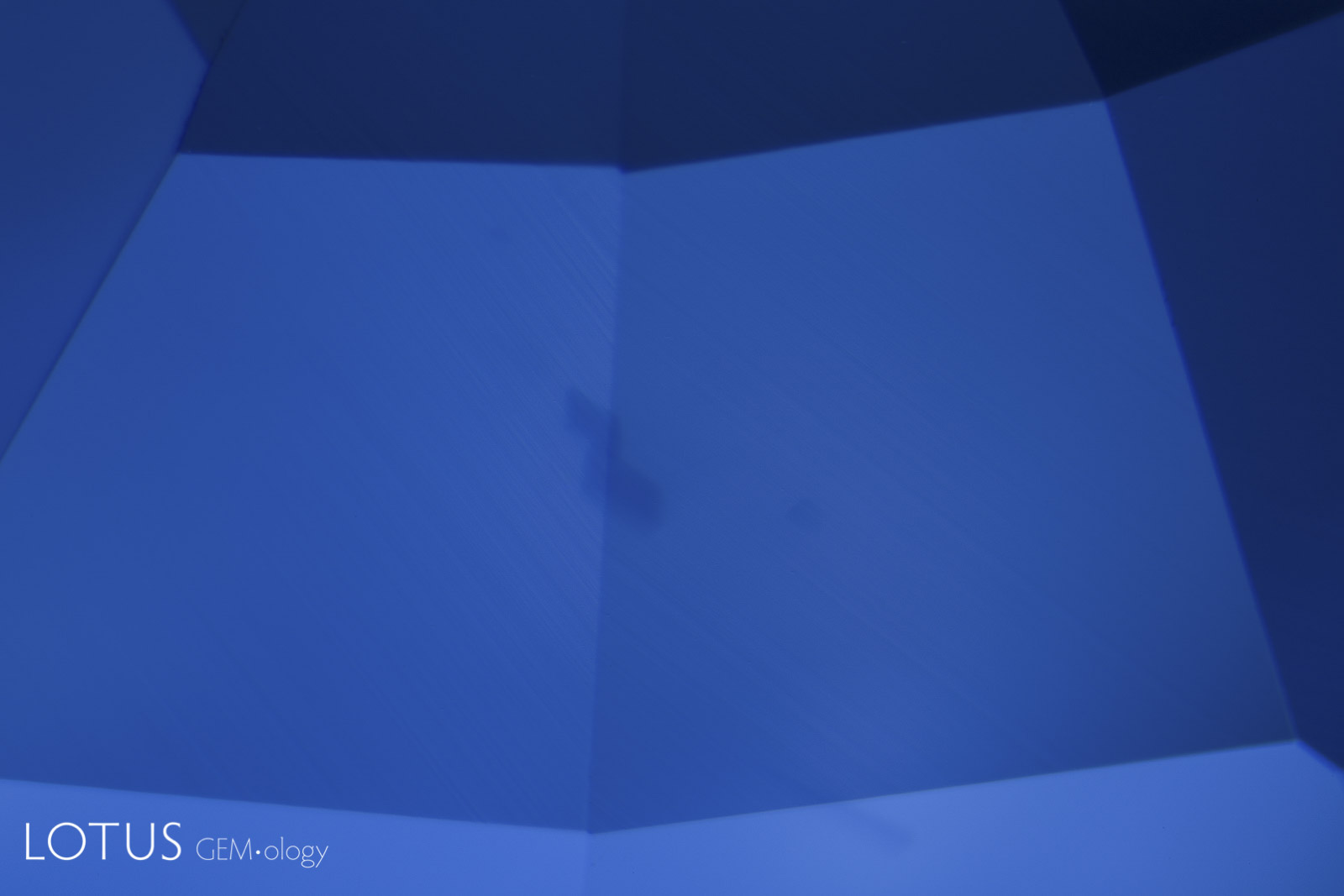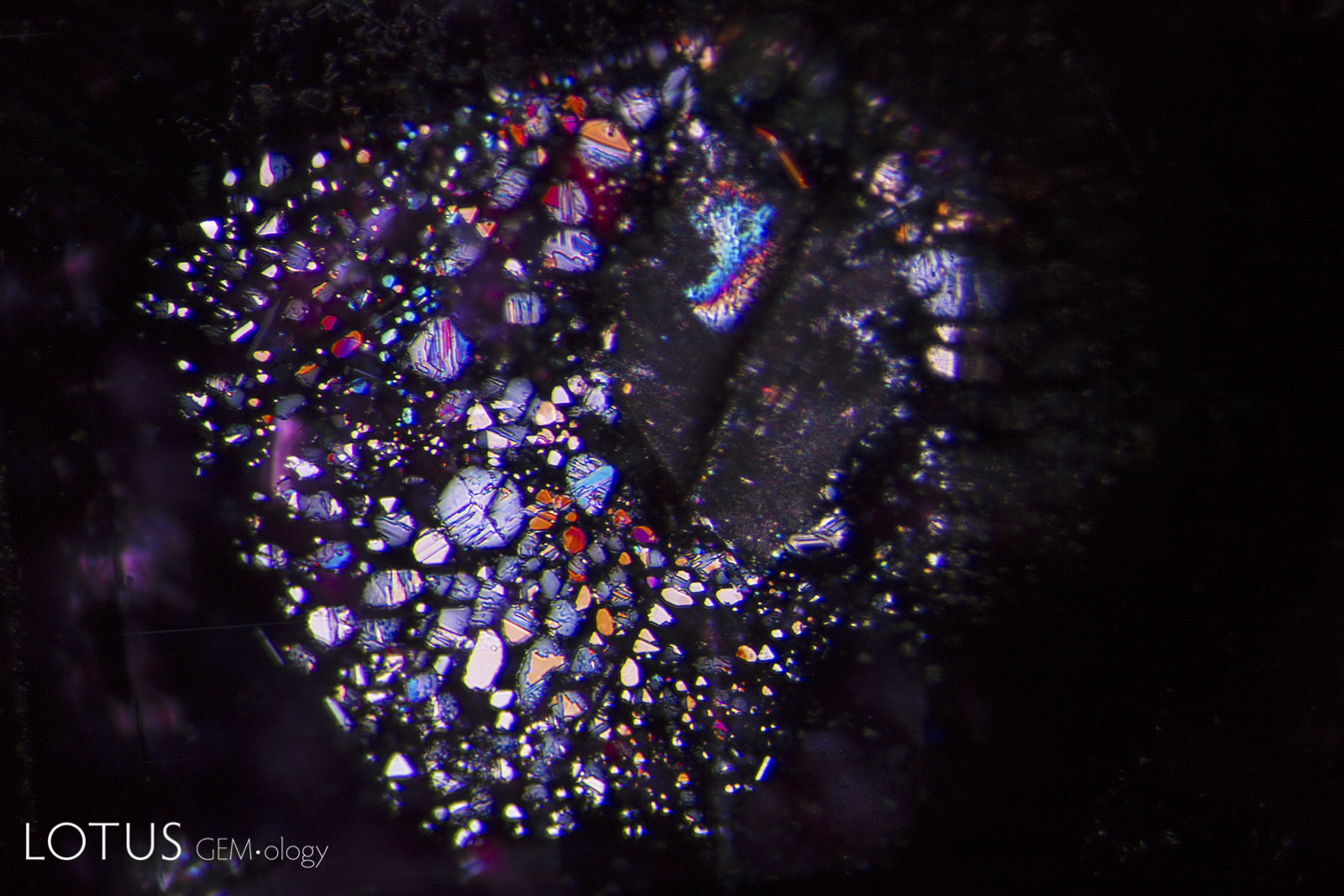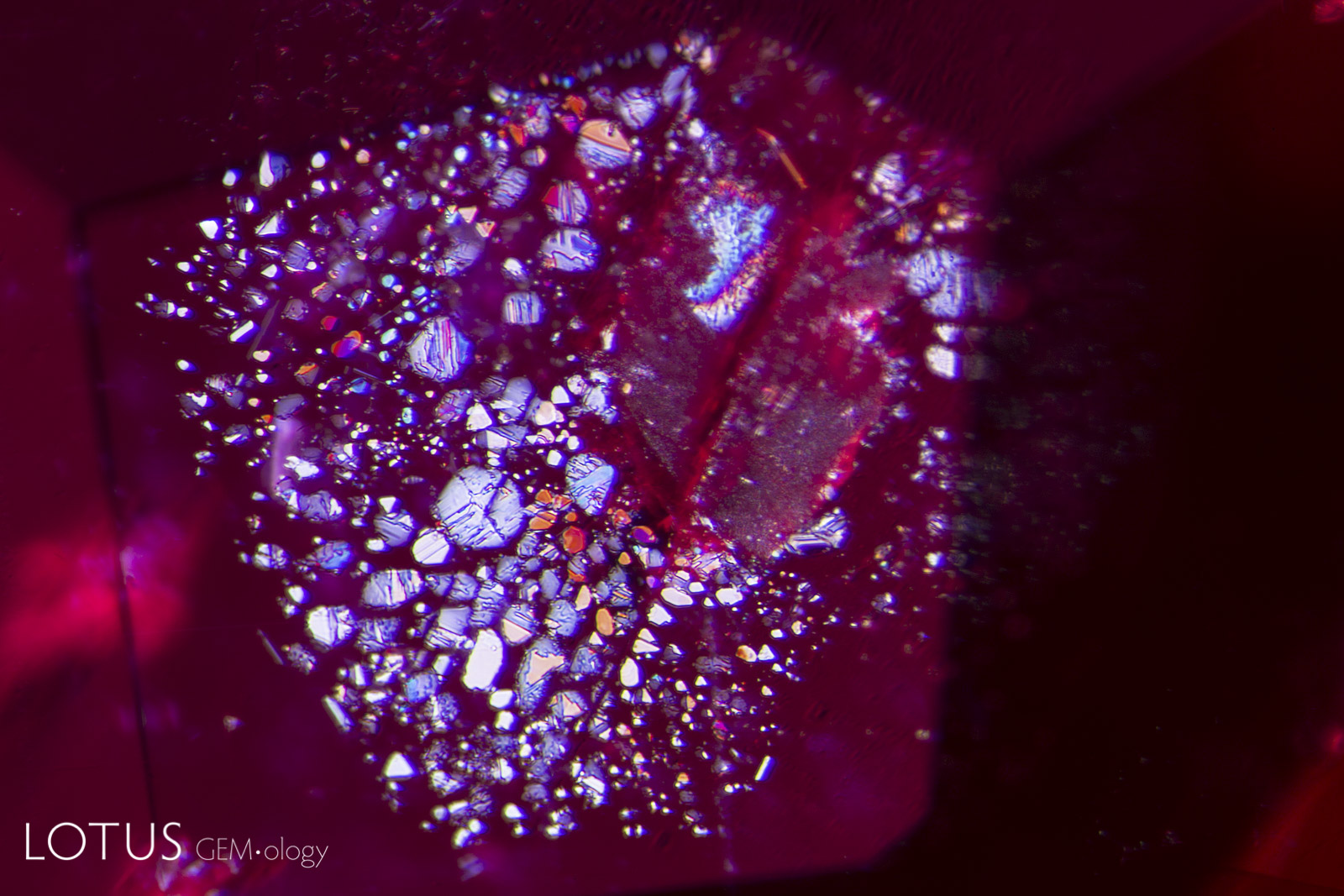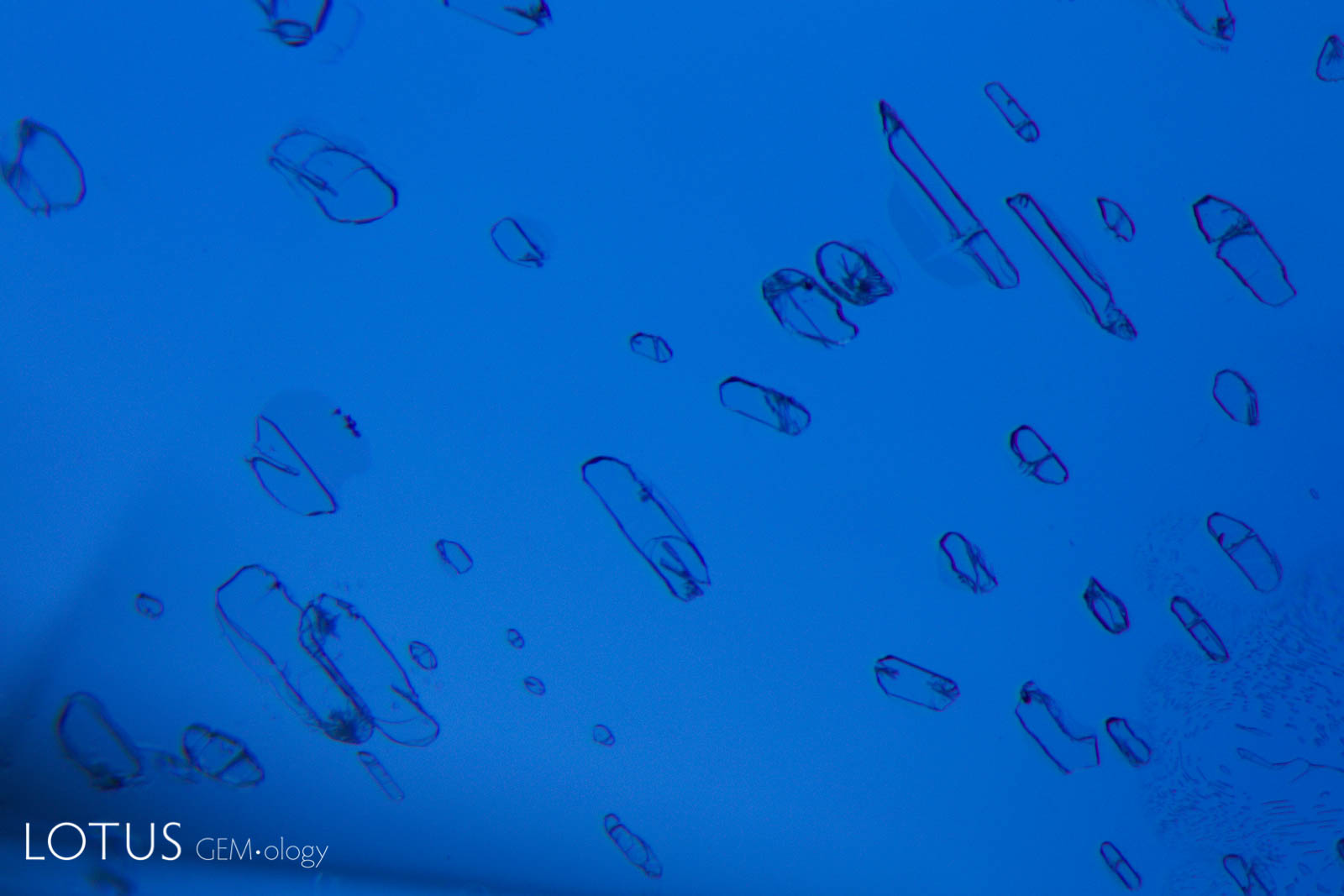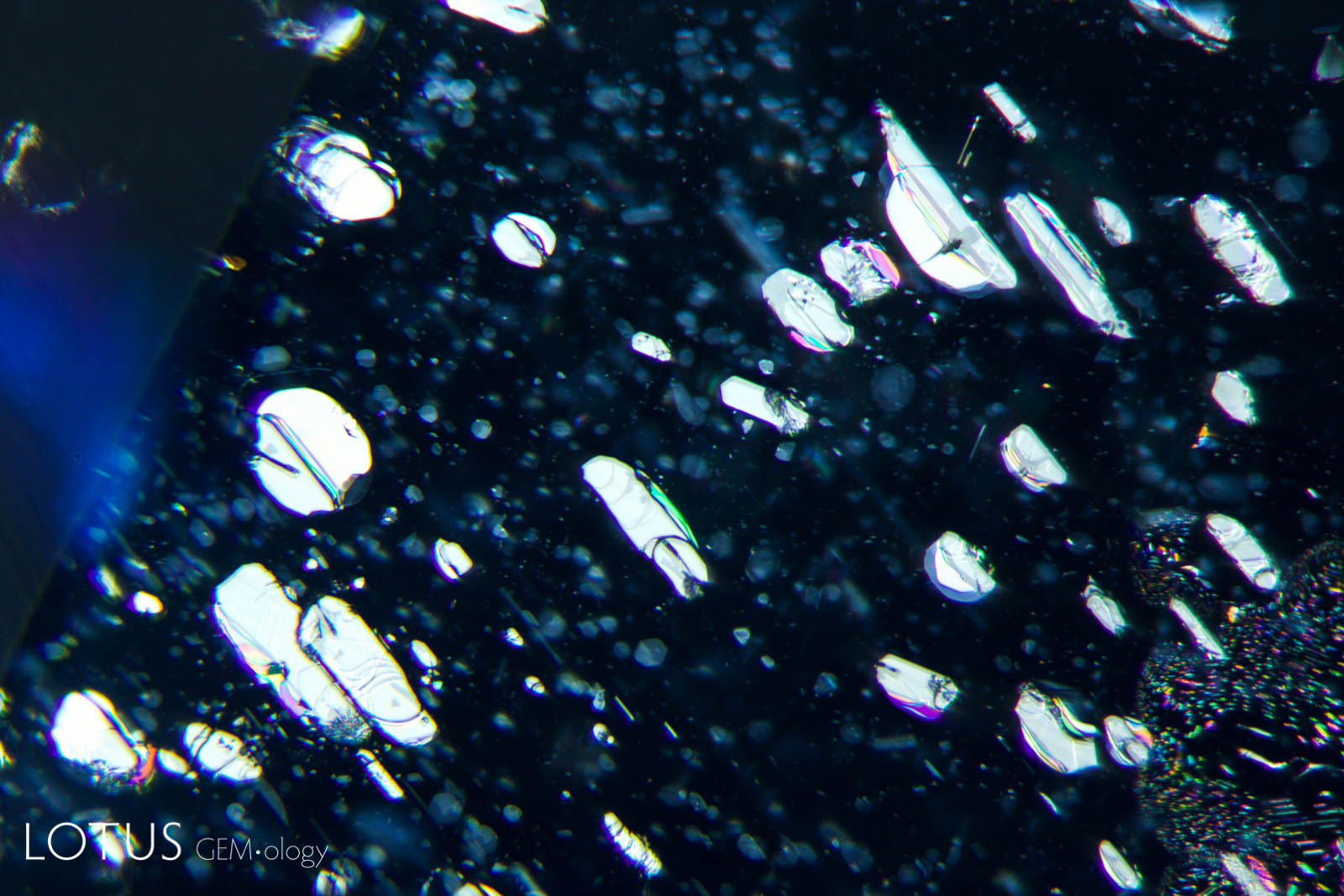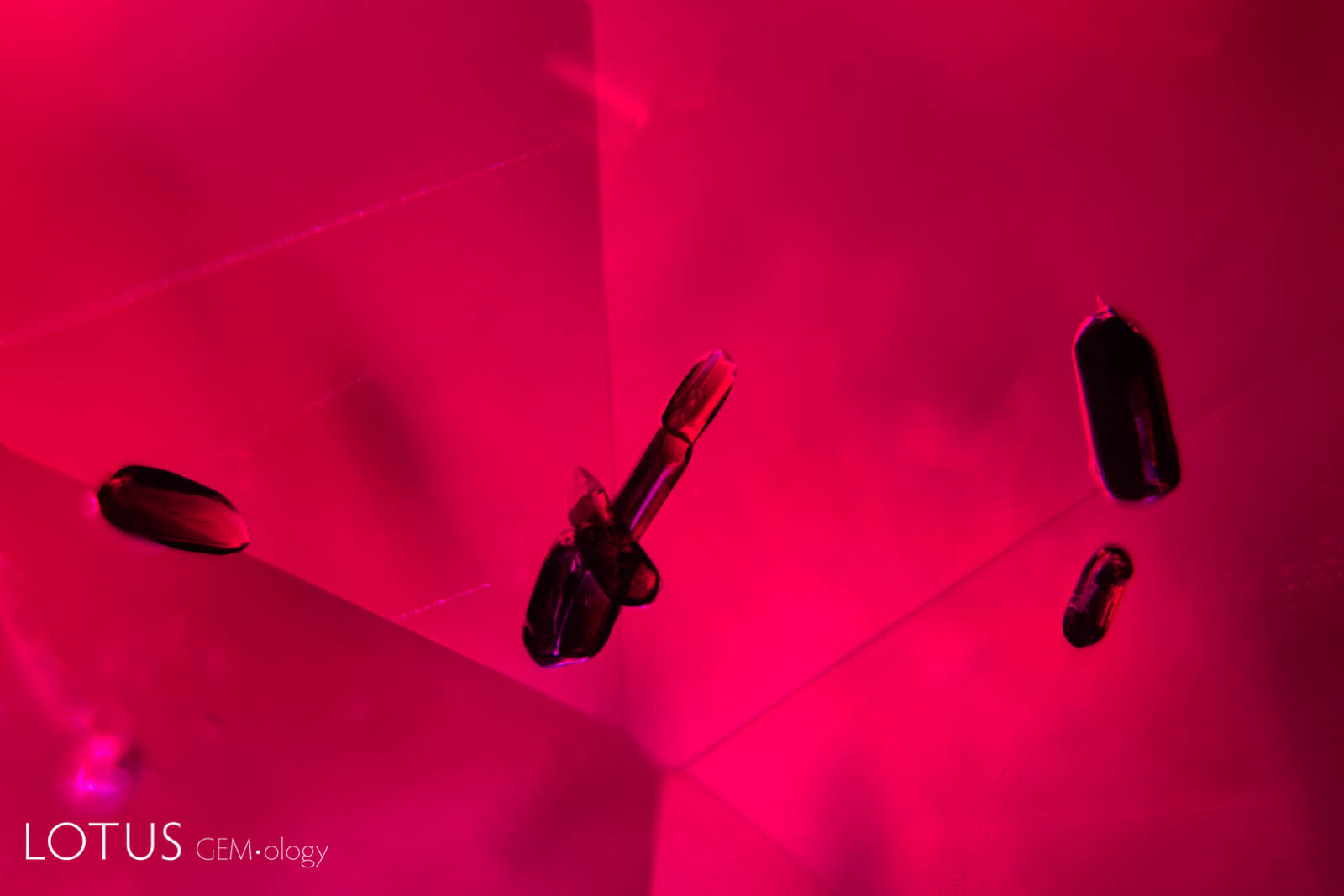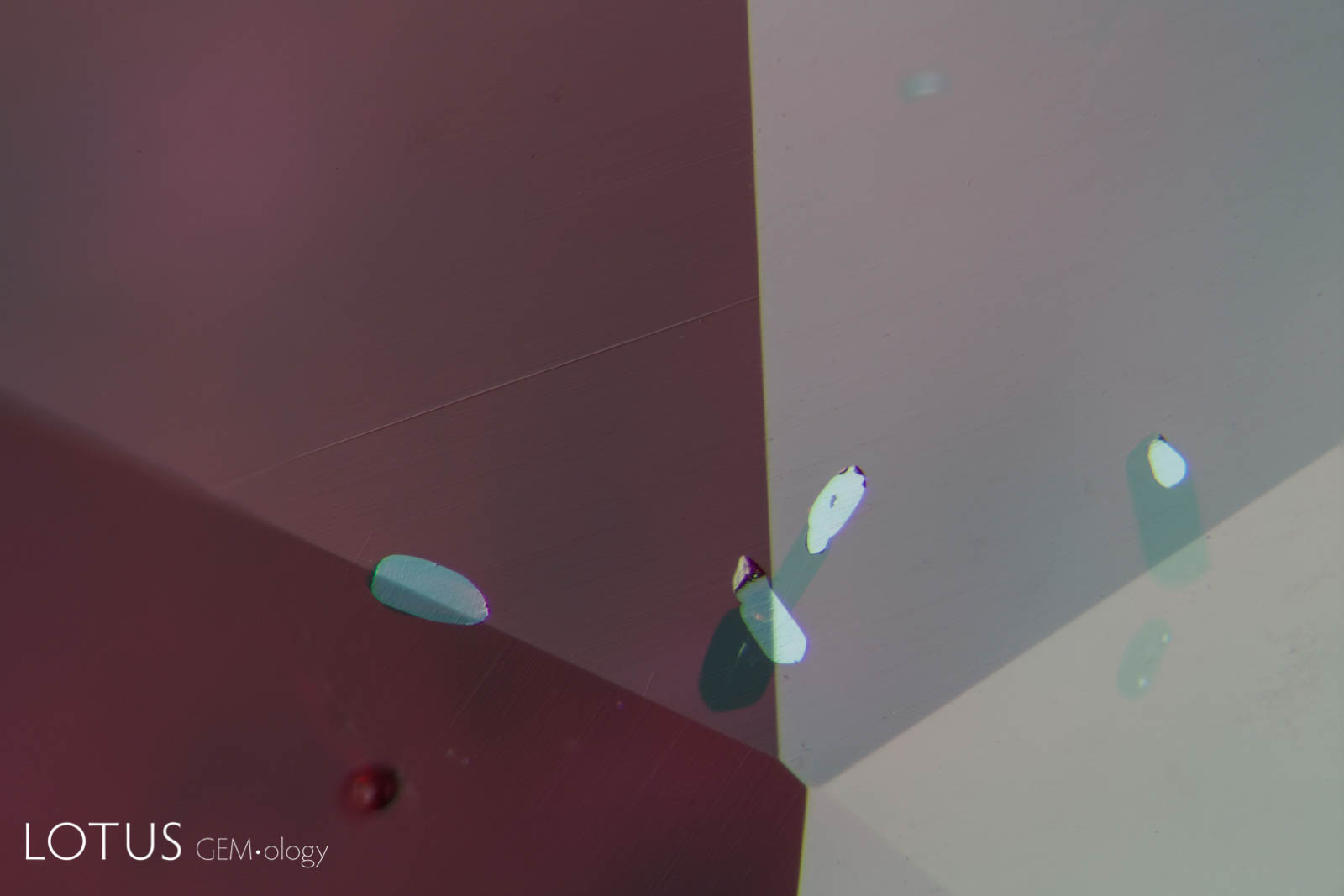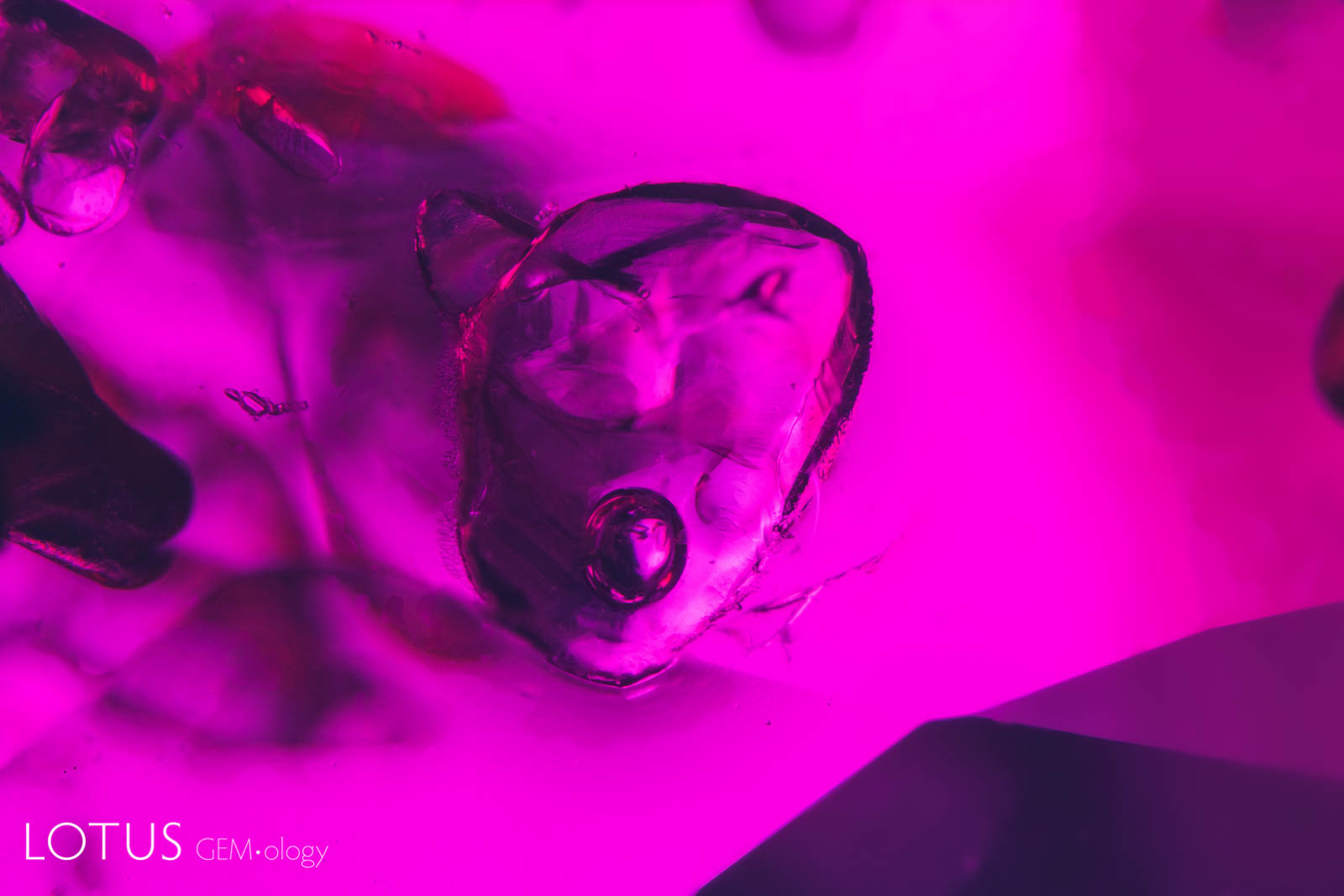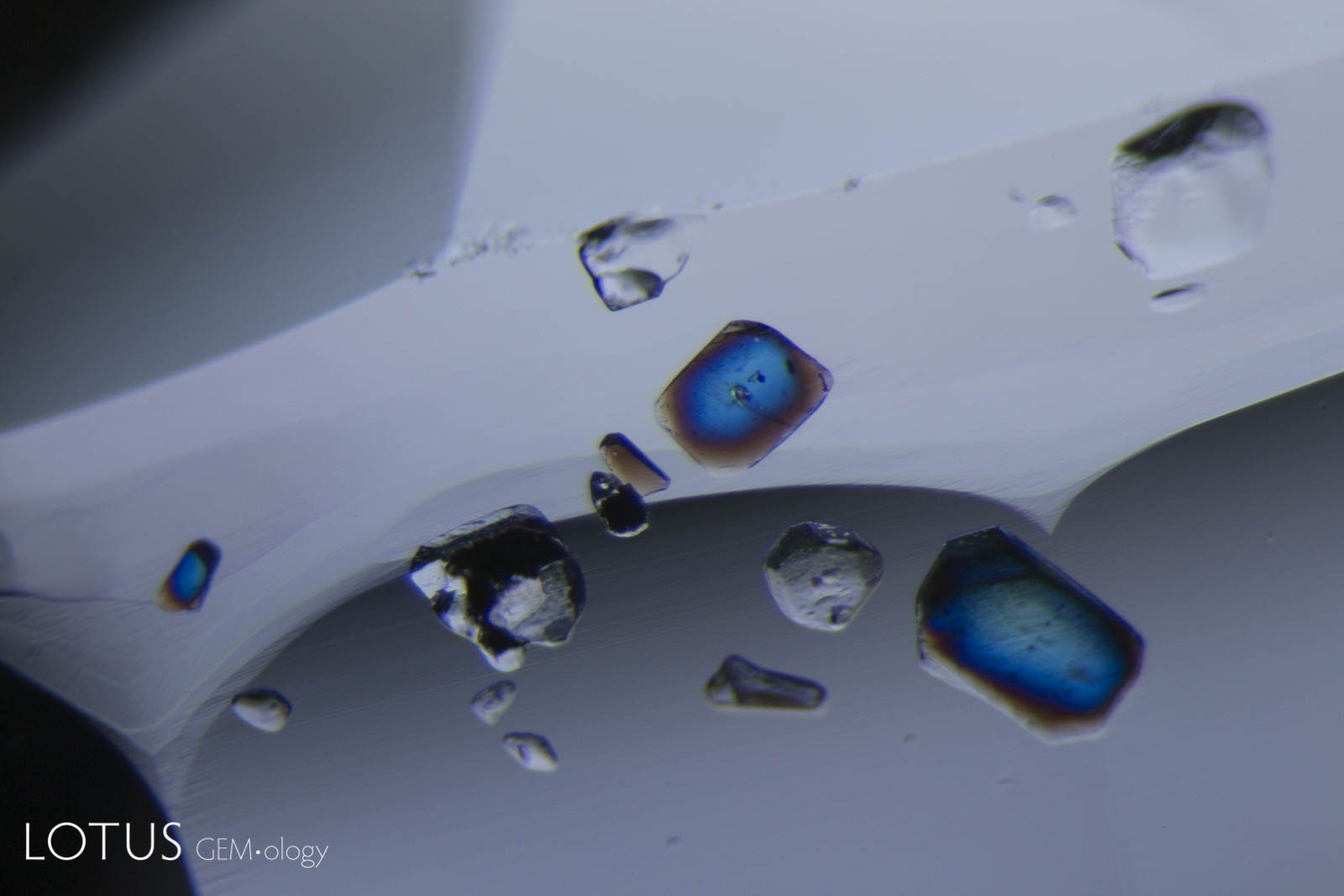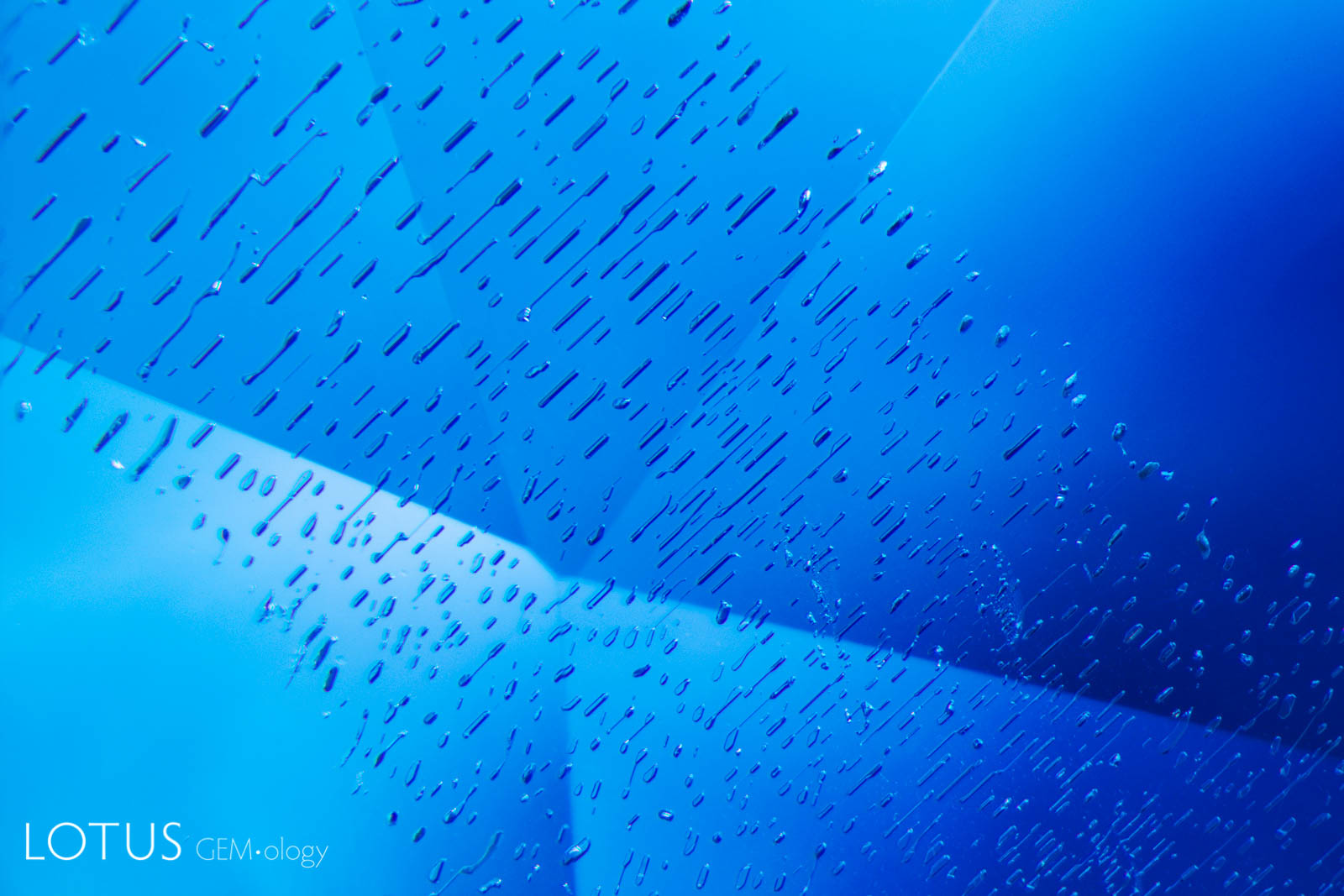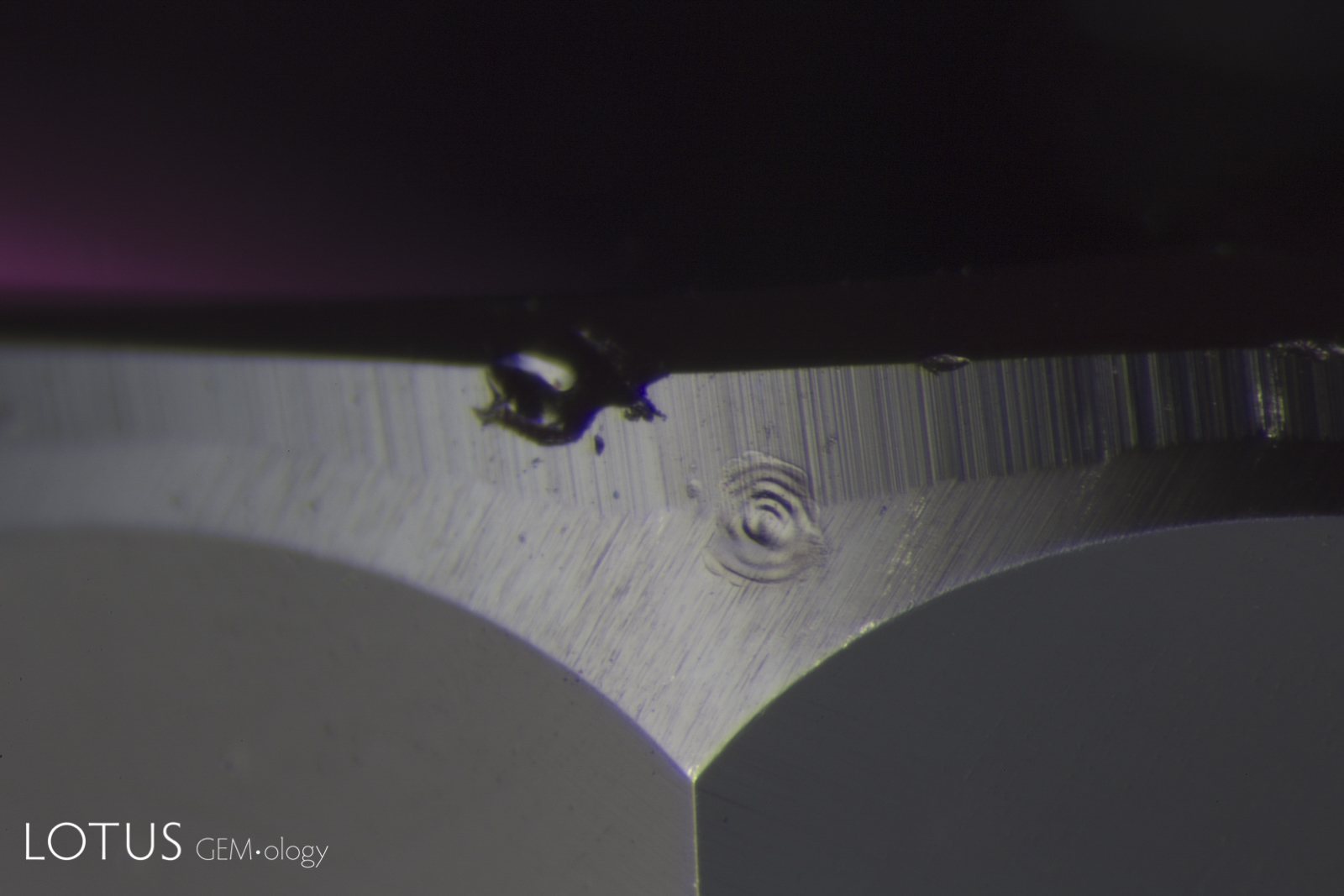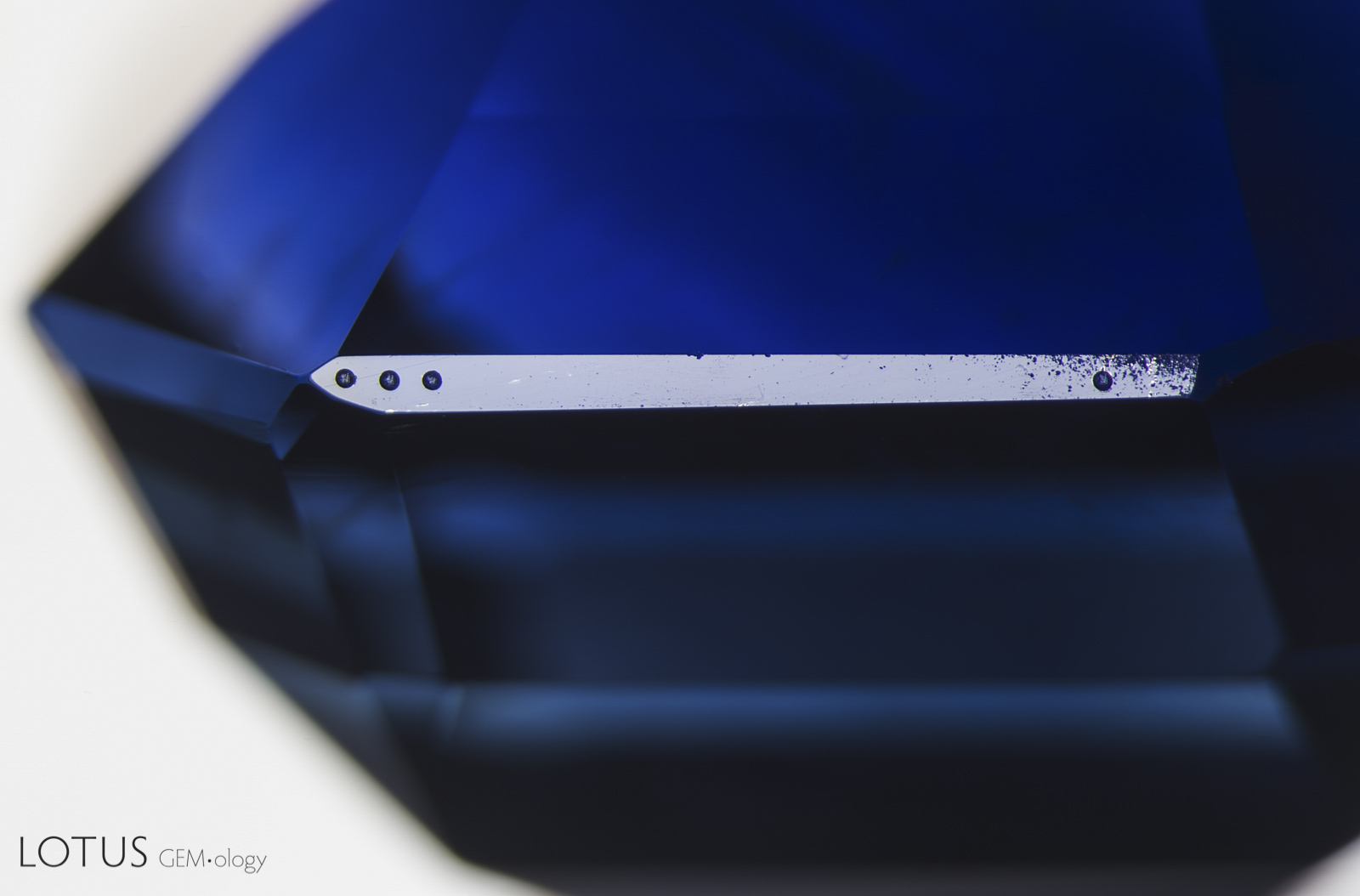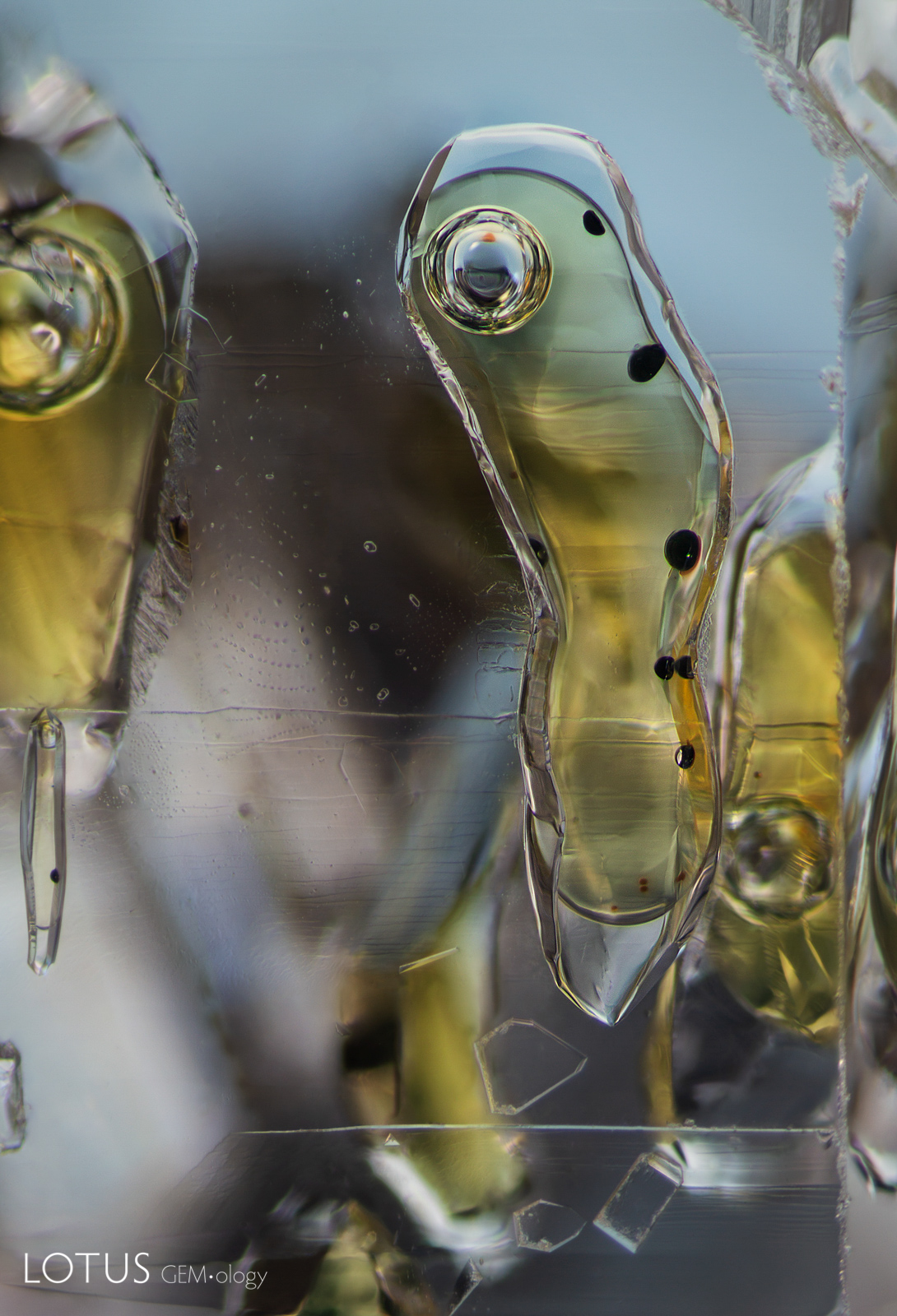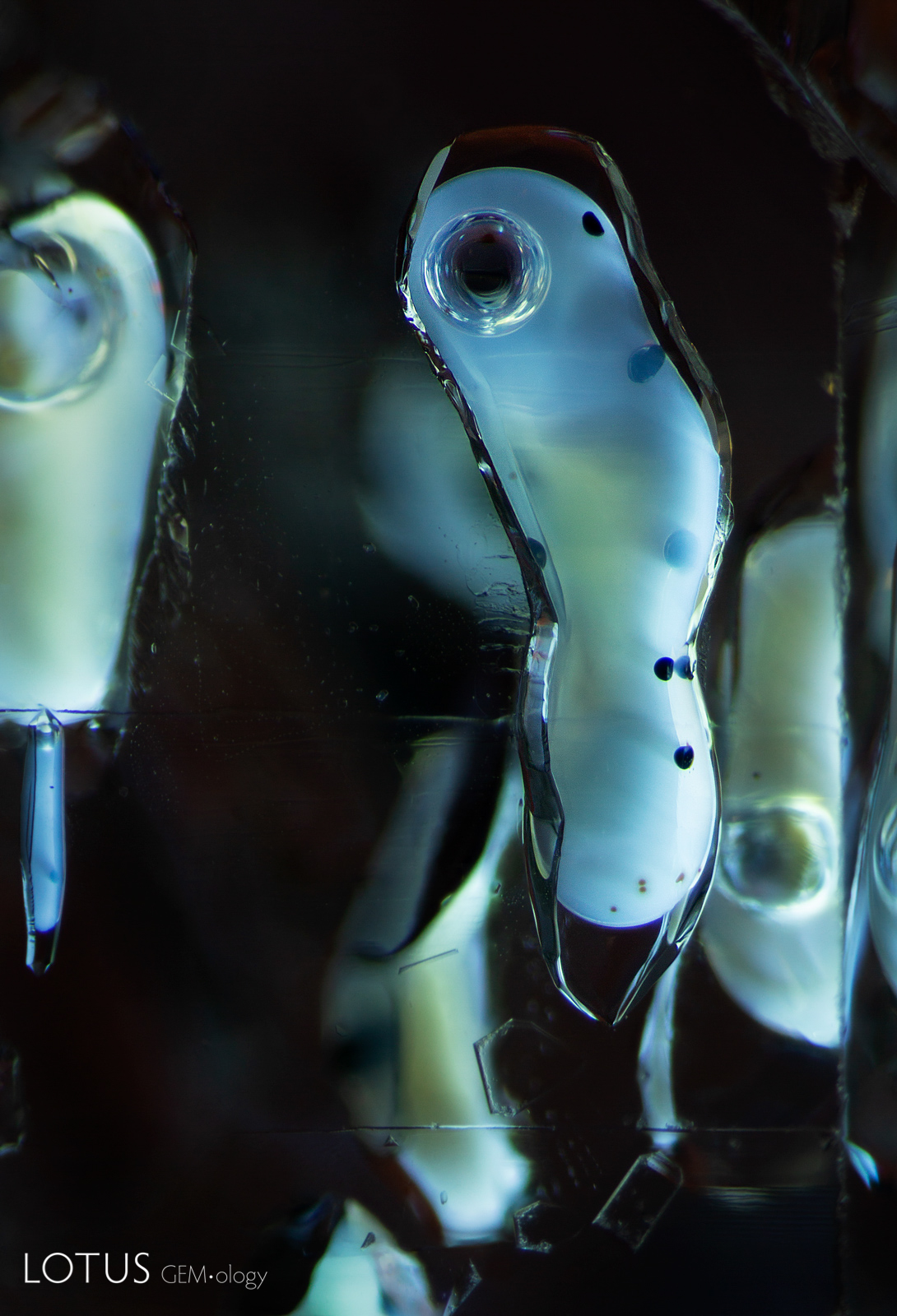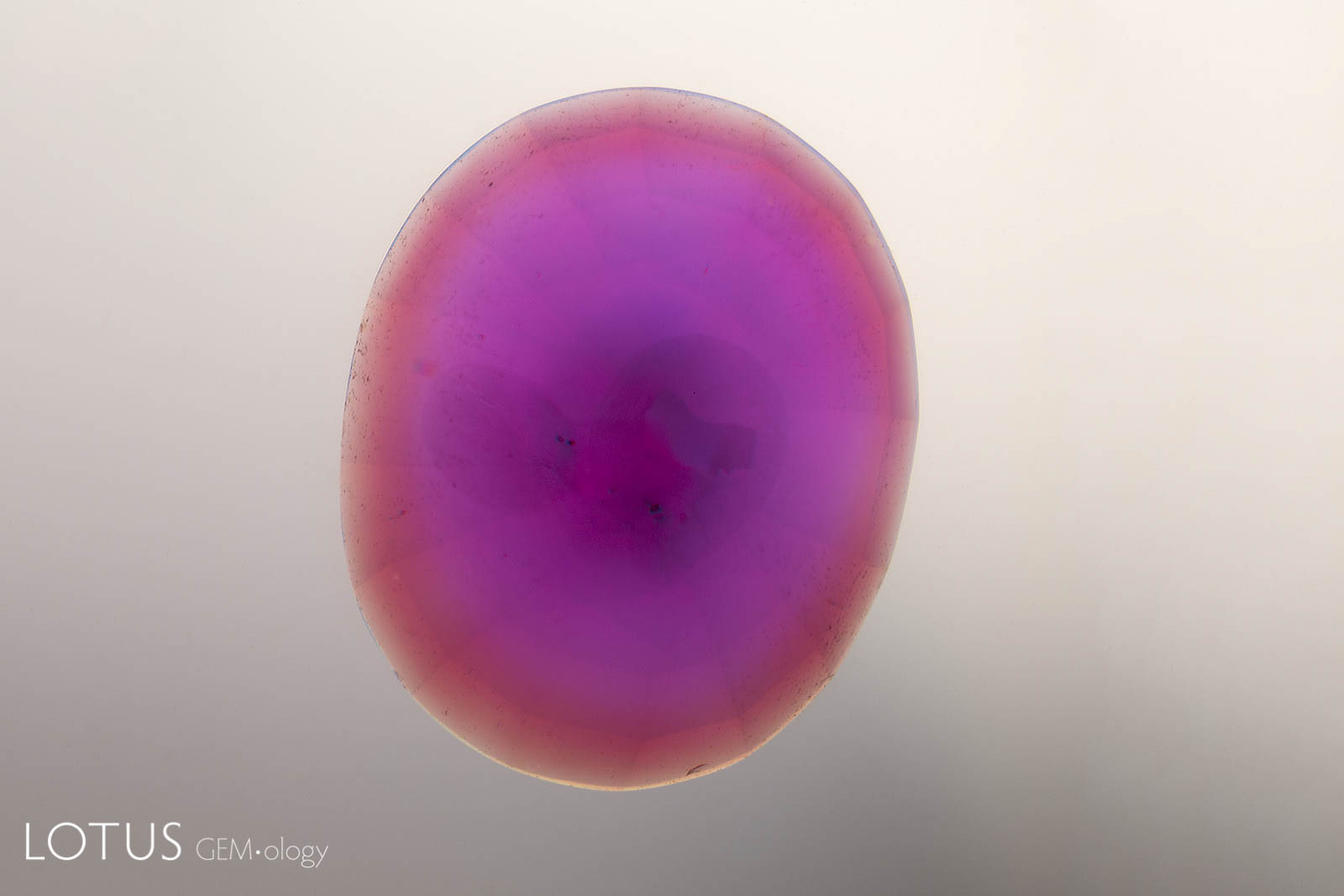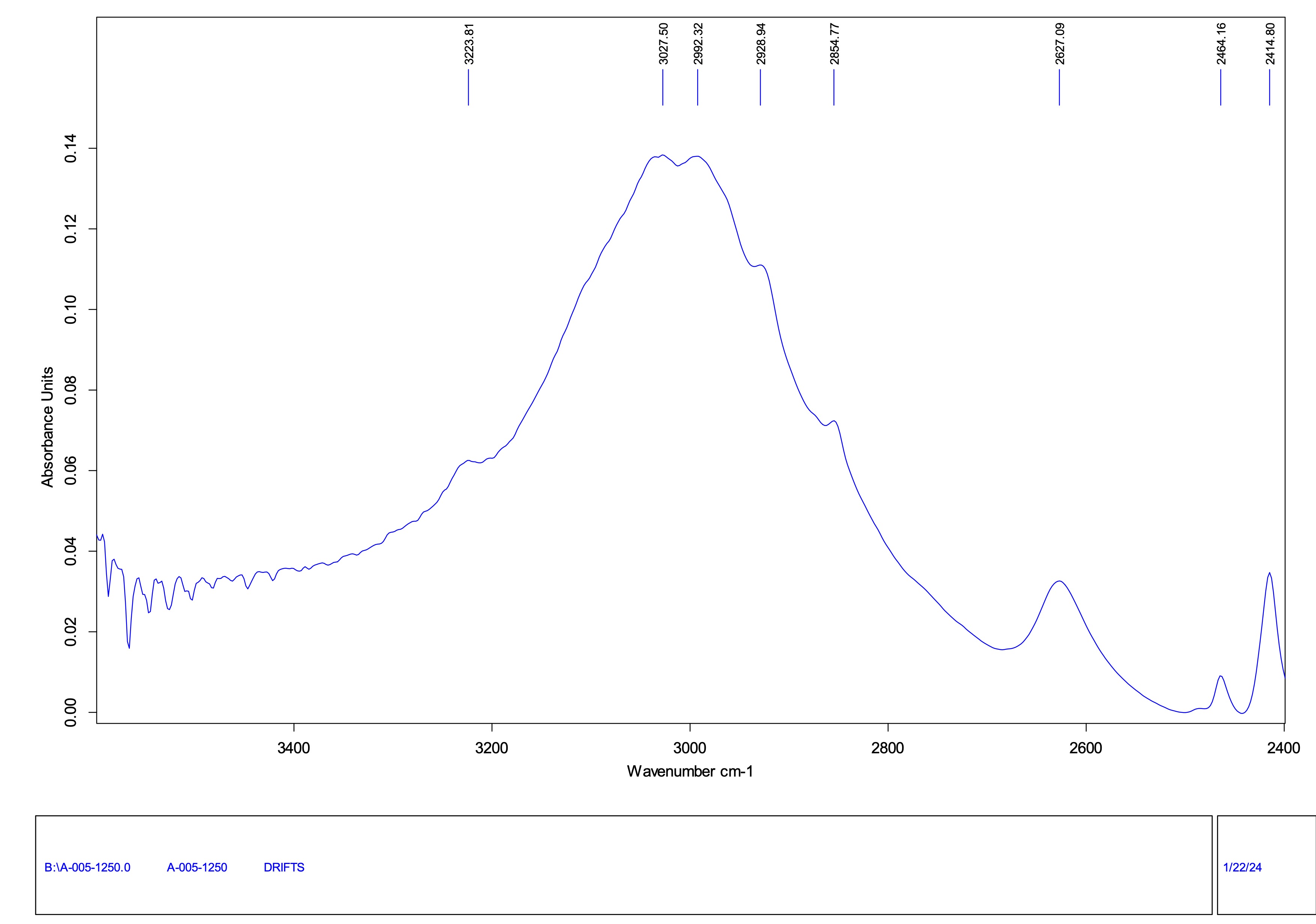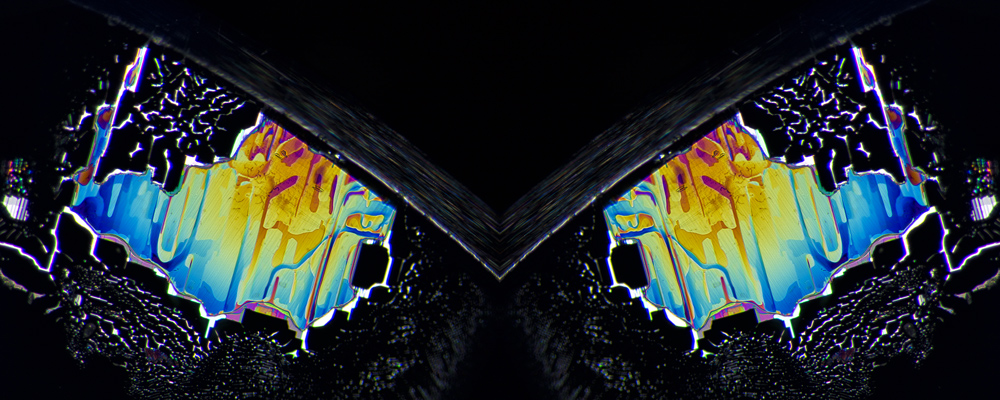
Siamese Twins — Feature Comparison & Contrast
This special Gallery features paired images from the Lotus Gemology Hyperion Inclusion Database, along with other pairs of spectra, etc., allowing one to directly compare contrasting features.
It would be both an identical work of art only by virtue of its difference. The same but different, he suggested, like twins.
Johnny Rich, The Human Script
Showing 39 of 39 sets
Click on any photo for a larger image.
1. The first step of preparing a piece of fei cui jade for polymer impregnation is to boil it in acid to remove any mineral impurities from the tiny fissures between the individual crystal grains that make up the jade rock. These fissures are then filled with a polymer. Thus the treatment removes brown discoloration and greatly improves the translucency. However the telltale micro-fissures from the bleaching process can still be seen by examining the surface with overhead light, as shown here. Polymer-impregnated jade is termed “B-jade” in the trade. Untreated jade is known as “A-jade,” while dyed jade is “C-jade.” If a dyed polymer is used, it is termed “B+C jade.” Field of View = 12 mm.
2. In constrast to the B-jade, the surface of this high-quality untreated fei cui jade from Myanmar shows virtually no fissures and slight undercutting from one mineral grain to the next (fei cui is a rock composed of many small crystals). Specimen courtesy of Kiarttichatra Intarungsee. Field of View = 10 mm.
1. These included hexagonal crystals in a Sri Lankan blue sapphire have inclusions of their own. These are actually sapphire crystals captured in a sapphire host, as shown by their extremely low relief. Because of the low relief, the outlines of the crystals are difficult to discern.
2. In darkfield (left) they are hard to distinguish from the surrounding corundum, but in crossed polars (right) it’s apparent that they are distinct crystals of their own.
1. Another example of sapphire crystal included in a Ceylon sapphire, this time a yellow sapphire. In darkfield the outline of the sapphire crystal is hard to discern.
2. Switching to crossed polars illuminates the sapphire inclusion dramatically.
1. When viewed in transmitted light, this negative crystal within an untreated Sri Lanka padparadscha displays a hexagonal plate of graphite, along with a needle of diaspore. The undamaged nature of the negative crystal and diaspore needle confirms that the gem has not been heat treated.
2. Using overhead reflected light on the same negative crystal, one can see the high-relief of the hexagonal plate of graphite. The diaspore needle has a refractive index quite close to the surrounding corundum, and so "disappears" into the corundum matrix. The undamaged nature of the negative crystal and diaspore needle confirms that the gem has not been heat treated.
1. This red spinel from Tanzania’s Mahenge mines showed an unusual orange coloration surrounding a fingerprint inclusion.
2. When examined in oblique fiber-optic lighting, the orange area displays milky bluish clouds. This unmasks the orange color as a function of scattering, the same phenomena that creates a blue sky and orange sunset.
1. In this heated and fissure-healed ruby from Myanmar, a surface cavity is filled with glass. The glass can be identified by the gas bubble at the lower part of the cavity.
2. The same cavity when viewed with diffuse overhead illumination, which clearly reveals its extent. The glass can be identified by its lower luster.
1. Demonstrating that the inner world can be as captivating as that outside, this Madagascar sapphire displays a small fingerprint scar with a beguiling moiré pattern. The undamaged nature of this inclusion testifies to the natural, untreated origin of the gem.
2. In this sapphire from Sri Lanka, evidence of high temperature heat treatment can be found in this moiré-patterned fingerprint. The once-lovely lacy pattern of liquid droplets is now besmirched by circular “explosions,” where the pressure from heating caused ruptures in the microscopic negative crystals, thus deflowering Mother Nature’s exquisite work of art.
1. Many Mozambique rubies contain mica crystals, which are extremely heat sensitive and will be damaged by heat treatment, even at relatively low temperatures (800–1000°C). Unheated Mozambique ruby.
2. After heat treatment, Mozambique rubies with mica crystals will display glassy fissures around the mica, as shown here. Heated Mozambique ruby.
1. Many crystals contain shallow fissures on their surfaces. In sapphires from Sri Lanka, Myanmar and Madagascar, these fissures often contain epigenetic yellow stains caused by deposits from Fe-rich fluids.
2. High-temperature heating not only destroys the yellow stains, but begins a process of healing, where the fissures turn white and start forming fingerprints, as we can see here. Note that such yellow stains are generally missing in the fissures of Kashmir sapphires.
1. Many rubies and sapphires contain shallow fissures on their surfaces. These typically display yellow to orange epigenetic iron oxide stains, as shown here.
2. When such a stone is heat treated, the stains turn white and bubbly fingerprints begin to appear.
1. This image clearly illustrates what master photomicrographer John Koivula has termed “chromophore cannibalization.” As titanium is drawn out of solid solution to form exsolved rutile silk, the area in the immediate vicinity is decolorized, losing its blue color. This is a natural process and is the reverse of “internal diffusion,” where heat treatment sends the titanium back into solution, creating blue clouds or “inkspots” around the rutile remnants.
2. When a rutile-silk containing sapphire is artificially heated, titanium from the rutile dissolves into the surrounding sapphire. Once in solid solution, the titanium reacts with iron, creating a blue color. The result is tiny blue halos surrounding the remnants of the rutile silk, a process dubbed “inkspot internal diffusion” by John Koivula. This partially dissolved silk with blue color concentrations is a clear sign that the sapphire was heated and is the opposite of chromophore cannibalization.
1. In this heated sapphire, one can clearly see “ink spot” internal diffusion, caused when the heat treatment partially dissolves the rutile silk, sending titanium into solid solution. This is a sure sign of high-temperature heat treatment. Check the next photo for the appearance in short-wave ultraviolet light.
2. Using a powerful short-wave ultraviolet light, one can see a chalky fluorescence in the same pattern. It is the colorless, rather than blue areas, that fluoresce.
1. Dark red, high relief crystal of primary rutile; surrounded by halo of fine particles; unheated sapphire, Songea, Tanzania; Darkfield + oblique fiber optic illumination.
2. When a sapphire or ruby containing rutile is heated, titanium bleeds from the rutile into the surrounding corundum (entering into solid solution), creating a blue halo. Heated sapphire (actually Be diffused), Songea, Tanzania; lightfield (white filter).
1. Unusual birefringent crystals in a low-relief partially healed fissure in a sapphire treated with high-temperature heat plus modest pressure (HT+P). When tested with Lotus Gemology’s microraman, they proved to be corundum. It is thought that they crystallized during the treatment process. FOV 4 mm.
2. When viewed between crossed polars, the crystals stand out much more clearly.
1. Secondary healed fissures in corundum are often filled with carbon dioxide, but usually in liquid form (solid carbon dioxide is what we know as “dry ice”). On occasion we see it in both liquid and gaseous form. This series of four images shows liquid carbon dioxide with a gas bubble (the yellow area). As the heat of the microscope warms the specimen, the gas bubble shrinks and eventually disappears. The critical temperature at which the phase changes is 31.2°C. The existence of carbon dioxide inclusions in sapphire was first noted by David Brewster in 1826. He also noted the explosive nature of such inclusions, which burst at temperatures generally between 250–400°C.
1. Rosette inclusion surrounding a mica crystal in an unheated Mozambique ruby, seen in transmitted.
2. Reflected light reveals surface detail that is masked in transmitted light.
1. Overhead lighting was used to photograph this scene in a violet sapphire from Sri Lanka, which shows two large mica plates. The undamaged state of the mica reveals that this sapphire has not been subjected to heat treatment.
2. A combination of dark field and overhead lighting was used to photograph the same scene as at left, revealing two large mica plates and smaller rounded zircon crystals. The undamaged state of the mica reveals that this sapphire has not been subjected to heat treatment.
1. In this flattened negative crystal in a Sri Lankan padparadscha sapphire, multiple phases can be found, including both liquid and gaseous carbon dioxide and a diaspore needle. Because diaspore’s refractive index (nα = 1.682–1.706; nβ = 1.705–1.725; nγ = 1.730–1.752) is so close to corundum (nω = 1.762; nε = 1.770) the diaspore needle almost disappears into the sapphire, appearing like a narrow indentation into the negative crystal. Liquid carbon dioxide becomes a gas at a fairly low temperature, with just the heat of the microscope causing the bubble to disappear. Intact negative crystals such as this are positive proof that the specimen has not been heat treated.
2. Reflected light reveals surface detail that is masked in transmitted light.
1. A fingerprint with many small negative crystal channels showing no signs of heat-induced damage in a sapphire from Madagascar.
2. In this heat-altered fingerprint, one can clearly see that each of the negative crystal channels has burst from the heat treatment. Also note the glassy circular "discoid" fissures.
1. Brown monazite crystals are sometimes found in sapphires from Madagascar’s Ilakaka region. In this gem one can see glassy tension halos around each, indicating that the gem was subjected to low temperature (less than 1400°C) heat treatment.
2. When viewed with dark-field illumination, the glassy tension halos around each monazite crystal are more distinct. Note: Saeseaw et al. (2020; Gems & Gemology, No. 4) showed that monazite decolorizes at 600°C, suggesting that these inclusions may be natural, rather than the result of heat treatment. Monazite is radioactive, and thus that may have produced the fissures as the crystals expanded, similar to zircon in sapphire.
1. A heat-altered crystal with an iridescent decrepitation halo, alongside a surface cavity filled with glass.
2. When the direction of the reflected light is changed to show the surface, it reveals patches of glass on the surface (right).
1. When a crystal is heated (either by a magma or artificially by human intervention), it expands. Tension is often relieved by a fissure in the weakest direction, which in corundum is in the basal plane. Such fissures are difficult to see in dark-field illumination.
2. If the lighting is changed from dark field to overhead fiber-optic, the flat tension disc appears in dramatic relief. This example is in a heat-treated blue sapphire from Bo Ploi (Kanchanaburi), Thailand. Such inclusions are quite common in both rubies and sapphires recovered from magmatic sources.
1. Kashmir sapphires are unique in that the skin of many crystals feature deep blue spots of color, like spots on a leopard’s back.
2. These blue spots are sometimes incorporated into finished stones, where they will be found just below the surface.
1. Secondary "fingerprint" in a Mong Hsu (Myanmar) ruby before heating. Note the angular nature of the negative crystal channels.
2. Following heat treatment with flux, one can see the "necking down" and rounding of the channels. For more on this, see "Fluxed Up: The Fracture Healing of Ruby."
1. A lovely rosette inclusion surrounds a mica crystal in this ruby from Mozambique’s Montepuez region. This “rosette” actually consists of negative crystals flattened in the plane of basal pinacoid (perpendicular to the c axis). Oblique fiber-optic lighting.
2. When viewed with dark field and oblique fiber-optic illumination, the appearance changes dramatically, illustrating the importance of utilizing various illumination techniques with the microscope.
1. Mozambique silk before heating shows a high luster rutile needle and an attached lower luster daughter crystal.
2. When such a stone is heated to a high enough temperature, the daughter crystal begins to break down.
1. Negative crystals in an untreated Mogok, Myanmar (Burma) sapphire in transmitted light.
2. When illuminated with a fiber optic light from above, small exsolved plates become visible, in addition to the negative crystals.
1. Transparent crystals, seen at left in transmitted light, can be hard to distinguish from negative crystals.
2. However when observed between crossed polars (right), the interference colors reveal their doubly refractive nature. Untreated sapphire from Sri Lanka.
1. With oblique fiber optic illumination, primary rutile crystals in an untreated Madagascar ruby show a dark red color.
2. In reflected light, we can also see that they display a submetallic luster where they were cut through on the surface.
1. This ruby from Madagascar contains a large cavity with a mobile CO2 bubble.
2. As the gem is rotated in the stoneholder, the bubble moves. Such fluid-filled cavities (generally filled with liquid and gaseous CO2) cannot withstand heat treatment and thus are proof of natural origin.
1. Birefringent crystals light up in different colors in this sapphire from Sri Lanka when viewed between crossed polars.
2. Note the change in appearance of the included crystals when viewed between parallel polars.
1. Partially healed "fingerprint" in a Sri Lankan sapphire, before heating. Note the pristine nature of the tiny negative crystals.
2. Heating of such a fingerprint causes tiny microfractures as the negative crystals burst, creating shiny discoid areas and a hazy appearance.
1. Laser-Induced-Breakdown-Spectroscopy (LIBS) is used by some gem labs to test for beryllium. Unlike Laser Ablation Inductively Coupled Plasma Mass Spectroscopy (LA-ICP-MS), the surface is actually melted (rather than ablated), producing the circular rippled mark we see in the center of the girdle on the stone at left.
2. In contrast, LA-ICPMS ablates the gem, producing the symmetrical holes we see in the image at right.
1. Clouds of undissolved rutile silk decorate the inner world of this sapphire, providing evidence that the stone has not been subject to heat treatment.
2. When a silky sapphire is heated to a high enough temperature, titanium from the rutile silk is forced into solid solution, coloring the stone blue. But the silk may also contain other elements that cannot dissolve into sapphire so readily, leaving behind silk “skeletons,” as shown here.
1. A petroleum-filled cavity in quartz. In light field, the petroleum displays a yellow appearance.
2. The same petroleum-filled cavity in quartz, this time illuminated with a longwave ultraviolet (UV) torch. Under longwave UV, the petroleum fluoresces a chalky yellowish white.
1. Fine exsolved particles in a heated Sri Lankan yellow sapphires. When such stones are heat treated, magnesium diffuses into the sapphire, creating yellow-producing trapped-hole color centers. The result is color concentration around the particles, a process dubbed “internal diffusion” by gemologist, John Koivula.
2. The same stone when viewed with diffuse light-field illumination. Here you can clearly see the color concentrations around the particles.
1. In normal dark-field illumination, a fissure in this Colombian emerald shows a two-phase appearance.
2. By shining a longwave UV torch on the stone, the filled areas become immediately apparent with a chalky appearance. We can also see many small bubbles in the area with filler. Most oils and resins used to conceal the fissures in emeralds and other gems will fluoresce a chalky blue. Thus the UV torch can be an important tool in unmasking clarity enhancement so long as the gem’s body fluorescence does not overwhelm that of the filler.
1. Due to the size of the titanium ion, bulk diffusion with titanium achieves only shallow penetration (up to 0.5 mm). The result is color concentrations at the girdle and facet junctions, as shown above. Synthetic sapphire; Verneuil; Heat + Diffusion (H-D); Diffuse Light Field (Transmitted Light).
2. In contrast, beryllium (Be) diffusion, which produces a yellow color, can result in much deeper penetration because the Be ion is much smaller. Extending the heating time can even diffuse Be completely through the gem. While some stones may display a surface-conformal color rim (as shown above), Be-diffused stones do not show the darker girdle and facet junctions that are found in Ti-diffused stones.
3. Five sapphires viewed in immersion against a diffuse white background. The center stone is natural, while the four stones surrounding it are Ti-diffused; note the dark girdles and facet junctions of the Ti-diffused stones.
4. Beryllium diffusion results in a surface-conformal color rim.
1. In many yellow (and orange) sapphires (particularly from Sri Lanka), the yellow/orange color is caused by a trapped hole color center. This produces a strong 3160 cm-1 peak in the infrared spectrum, as shown above. Note: Peak labels are approximate only.
2. With heated yellow sapphires from Sri Lanka, the 3160 cm-1 peak is destroyed by the treatment, and is generally replaced by a broad peak centered around 3000 (as above). This is believed to be due to internal diffusion of magnesium from exsolved particles into the host corundum.
Note
The title graphic by Richard Hughes was inspired by Master photomicrographer John Koivula, who demonstrated this technique of image mirroring to create aesthetic patterns at the International Gemmological Conference in Brazil in 1987.




